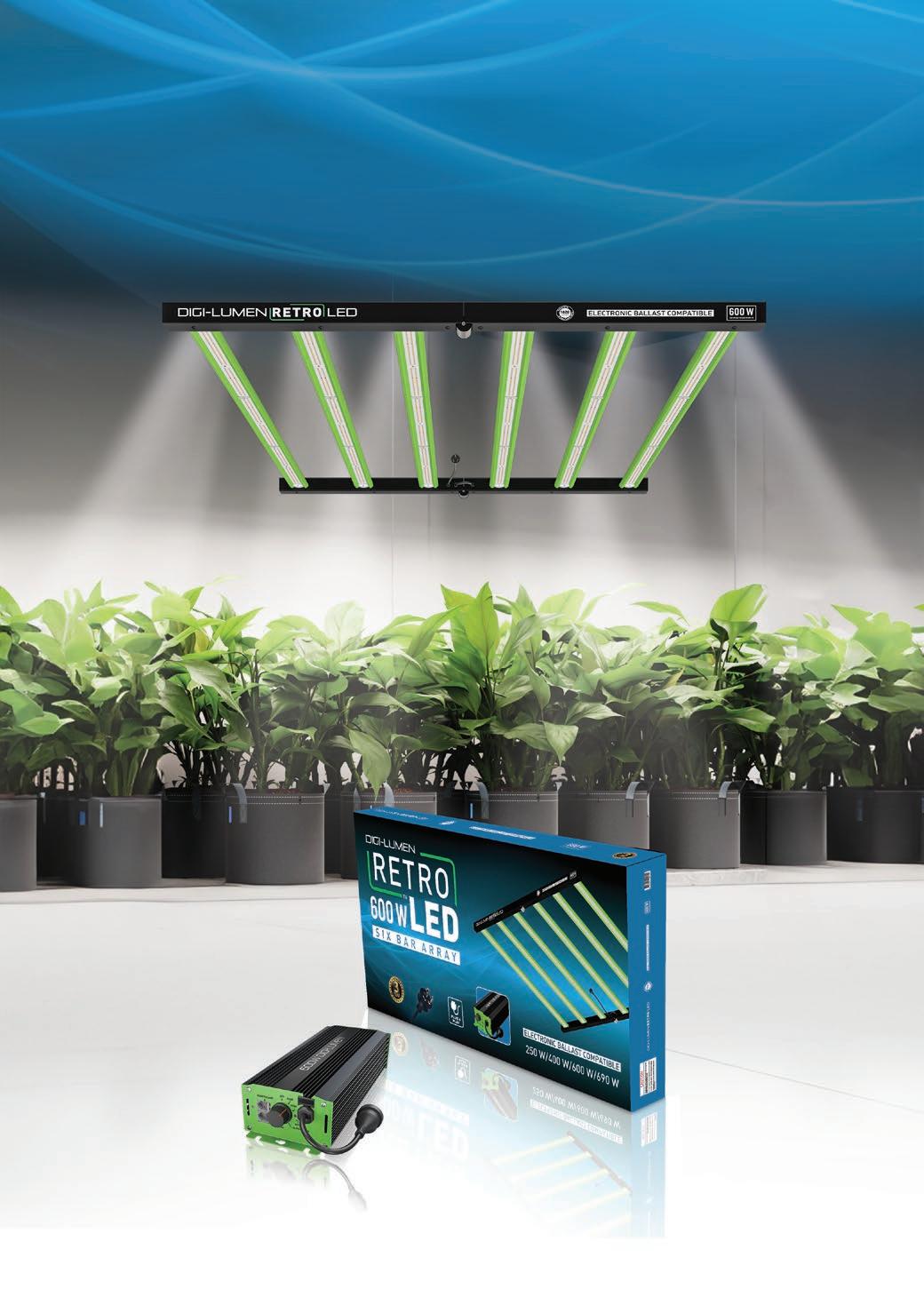

















































































































































































TRUSTED BY SERIOUS GROWERS SINCE 1994






















































































































































































TRUSTED BY SERIOUS GROWERS SINCE 1994



If there is a gardening subject I am familiar with, it’s learning from my mistakes. I have been gardening indoors for the past 20 years. I have read many books, articles, blogs, and magazines and watched or listened to countless YouTube videos, movies, and podcasts. Still, I am far from knowing it all. As many colleagues have stated, the more I learn, the less I know. Don’t get me wrong, I have learned so much and have a good handle on my work -- until something goes wrong. Like people, all plants are different, even within the same family.
Once you master the basic principles of indoor gardening, that is often where the real learning begins. Having a “green thumb” means you can listen to and understand what a plant needs just by looking at it. But what that plant is trying to tell you may not always be clear, or with some varieties, you don’t speak their language and can’t figure it out.
When asked to write about some of the most common problems and solutions they have encountered over the years, Dr Av Singh and Dr Colin Bell wrote similar articles. What they both discovered about themselves was that what they thought they knew about growing was not so straightforward, and their experiences with the plants themselves have taught them as much as their PhDs have.
Learning from our mistakes and correcting our approaches and actions to become happier or better humans is one of the fundamentals of personal evolution. It equally applies to becoming a better gardener. Everest Fernandez says it perfectly in his article “Gardening Mistakes Are

SPECIAL THANKS TO:
Adam Clarke, Anne Gibson, Av Singh, Colin Bell, Cosmic Knot, Everest Fernandez, Jennifer Cole, Judy Nauseef, Keaton Haines, Lance Lambert, Marci Babineau, Regi Oneton, and Xavi Kief.
PRESIDENT Eric Coulombe eric@gardenculturemagazine.com +1-514-233-1539
EXECUTIVE EDITOR
Celia Sayers celia@gardenculturemagazine.com +1-514-754-1539
EDITOR
Catherine Sherriffs cat@gardenculturemagazine.com
DESIGN Job Hugenholtz job@gardenculturemagazine.com

DIGITAL & SOCIAL MARKETING social@gardenculturemagazine.com
ADVERTISING ads@gardenculturemagazine.com
PUBLISHER
325 Media INC
44 Hyde Rd., Mille-Isles QC, Canada J0R 1A0

Garden Culture is published six times a year, @GardenCulture
@Garden_Culture
Everest Fernandez has been filling our pages with relatable tales about growing and excellent advice to help our readers reach the next level in their gardening game. In this edition, he tells us about some of the worst mistakes he’s ever made in his indoor garden. As he points out in his article, mistakes have made him better at growing, so we should embrace our fumbles, learn from them, and grow better plants. We thank him for being so candid for our benefit!
In this edition, you write about some of your growing mistakes. Is there one in particular that keeps you up at night?
Oh, more confessions of a gardening glutton for punishment? Well, the one that haunts me is when I mindlessly combined Grow A and Grow B nutrient liquid concentrate in the same jug! It wasn’t a rush job; my head was in another galaxy. Realising this monumental gaffe a few hours later almost caused me to burp up sick. Sharing this agony with you is my penance. Happy now?


We’ve heard a lot about your failures in this edition. We don’t want you to feel bad, so tell us about one of your greatest growing success stories. Remembering triumphs is harder than recalling failures! After our first ill-fated grow light saga, we cobbled together some AquaTrays and Rockwool slabs (let’s say they were ‘found’) and another ‘refurbished’ grow light—1000W HPS this time. In a basement, with plants growing too tall due to remaining in a vegetative photoperiod for too long, my friend was on the brink of giving up. But, a eureka moment struck – we used string and weights to bend the tall plants towards the floor, creating a makeshift ‘scrog’. The result? A lush canopy of blooms a few weeks later. That yield set a high bar we chased for years, proving sometimes, even naivety and incompetence can breed success!
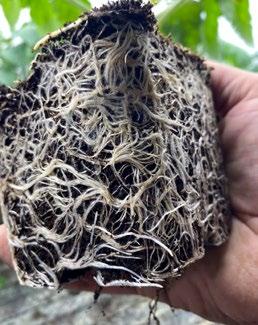


Check out the Everest Fernandez channel on YouTube for deep dives into everything indoor gardening and hydroponics related. tinyurl.com/everestfernandez
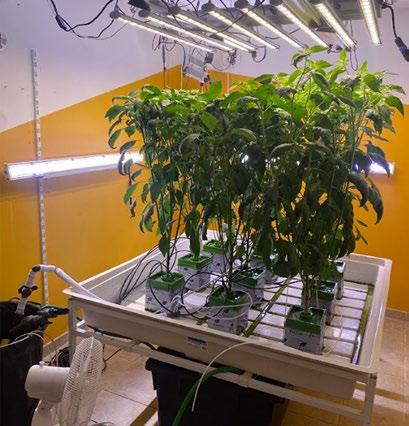
How would you encourage novice growers to keep going despite their mistakes?
To all the green thumbs in training: light is your friend, but don’t go overboard. You have to balance it with proper feeding and environmental control. Keep your nutrient concentration on the lower side (2.0 mS or under), and be generous with container size. Fill with a soilless medium, such as a trusty 70/30 coco/perlite blend, and always irrigate until you get a decent run-off. It’s disheartening when crops fall short of dreams, I get it. Plant new seeds in a propagation tent if you need to motivate yourself to grow again. Young seedlings will inspire you to clean the grow room from head to toe from the last disaster. The fresh start will rekindle your passion!

To all the green thumbs in training: light is your friend, but don’t go overboard. You have to balance it with proper feeding and environmental control.
You’ve lived in and travelled to a lot of different places. Where in the world would you like to visit next?
India, without a doubt. It’s a world of its own, brimming with vibrant culture, colours, and spice gardens I can’t wait to explore.
Name a few foods that you can’t live without.
Chilli, onion, ginger, garlic, coriander, cumin, and tomato. No prizes for guessing the main course: anything spicy and broadly Asian, please! My travels and taste buds are in a committed relationship with bold, fiery flavours and, just like my root zones in the early ‘90s, plenty of salt. 3
Are you interested in writing for Garden Culture Magazine?
We’d love to hear from you! Send us an email introducing yourself with a sample of your work editor@gardenculturemagazine.com


Athena Mix Kit makes mixing a concentrated fertiliser mix easy and accurate. Add a single pouch to the matching 1 gallon, fill with water and shake until fully dissolved. Look for Athena 10 lb Pro Line box for refill pouches.
Weighing powders can be inaccurate and lead to batches with different mineral compositions and plant deficiencies. Mixing a concentrate be fore measuring into a batch tank or reservoir is always better.
Contains:
• (1) 2 lb pouch Pro Core plus 1 Gal mixing jug
• (1) 2 lb pouch Pro Bloom plus 1 Gal mixing jug
• (1) 2 lb pouch Pro Grow plus 1 Gal mixing jug
• Ask for it at your local store.

The PRO GROW Propagation Tent eliminates the shortcomings of poorly designed prop tents. Access is easy via the 180-degree U-shaped zipper that runs through the front and top panels. At only 45 cm wide, it will fit snuggly into any cupboard or wardrobe. At 70 cm high, the PRO GROW Propagation Tent accommodates the 6000 K PRO GROW 60 W V2 LED bar. Suitable for both seeds and clones. Ample space to pre-grow small saplings up to 45 cm high before transplanting. 600 D mylar lined material and 16 mm powder-coated poles are the thickest in the industry. YKK zippers finish the package, providing longevity and quality surpassed by none. With PRO GROW Propagation Tents, you are off to the best start possible.
Check out WHG.net.au for more information.



Store and preserve all your cultivars in a small space.The Athena Tissue Culture Procedure reinvigorates old genetics and cleans plant material to outgrow infections like hop latent viroid (HLV).
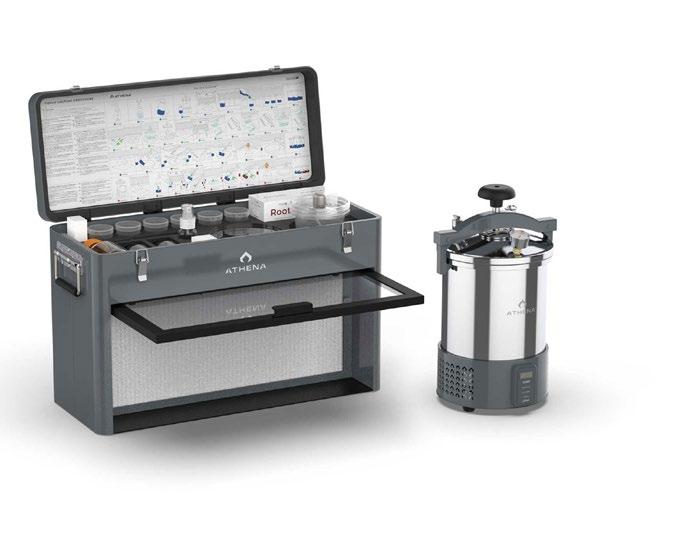
Culture Kit includes everything you need to learn and perform effective tissue culture anywhere you are. The portable Flow Hood and Autoclave are purpose-built to perform consistent and clean tissue culture operations. An integrated toolbox contains all the instruments and tissue culture media to make 120 Culture Vessels (refills available).
• Flow Hood provides a large workspace with a face velocity of 0.5 - 0.9 m/s
• Purpose-built autoclave with one-touch sterilising operation
• Contains pre-formulated tissue culture media mixes: Roots and Shoots
• Media formulas contain all ingredients. Just add water
• Detailed step-by-step Procedure to perform successful tissue culture
All usage instructions are conveniently integrated into the toolbox lid. Ask for it at your local store.



For over 100 years, Chikamasa scissors have been crafted in Japan. In the beginning, all scissors were handmade. Today, more than 50 industrial robots work to ensure high-quality scissors. These blades are razor-sharp, ensuring longevity. Fluorine coated to help slow down resin build-up, Chikamasa scissors save you time with less effort on maintenance.The OG’s of postharvest will help give your flower the perfect finish and premium bag appeal.
Contact Arcadia Sales Services or ask for them at your local store.


®




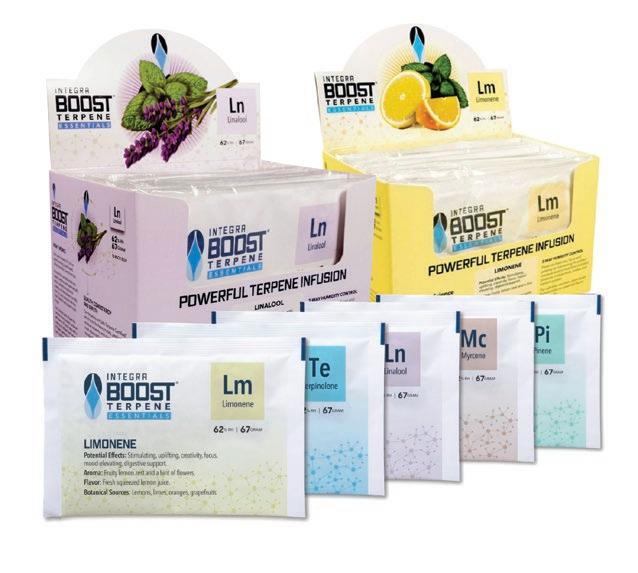
Infuse your herbal product with distinct aromas and flavours your favourite terpenes love. Integra Boost® Terpene Essentials contain the most popular isolates found in the cannabis industry, including linalool, limonene, myrcene, pinene, and terpinolene. These dual-purpose packs will incorporate flavour/sensory enhancing botanical terpenes into your herbal product and perfectly regulate humidity. Terpene Essentials uses a trusted salt-free, non-toxic, plant-based humidity control formula. Boost® Terpene Essentials can be used up to three times if stored in an airtight container between infusions. Available in 4-gram and 67-gram packs.
Visit WHG.net.au for a retailer near you.


The most common error in any cannabis building I have worked on is an insufficient understanding of dehumidification and humidification. I believe that more than 50% of cannabis grows in this country do not have enough, have way too much, or have little capacity control of the systems in use.
These problems with moisture are common, but they really shouldn’t be.
It is common knowledge that dehumidification is always one of the most complex aspects of a grow room. With fluctuations in RH, powdery mildew forms, and we also risk causing issues like a nutrient lock from a lack of plant transpiration. A lack of dehumidification will cause your pots to stay wet too long; too much dehumidification strips the moisture from the soil before the plant can uptake and transpire it. Ultimately, too much or too little dehumidification can hinder your crops.
Most facilities I have been in don’t understand dewpoint control and end up over-drying or underdrying the space based on the crop cycle
Generally, we see two different dehumidification systems in cannabis buildings. We see separate dehumidifiers in the space or a single air handler that does all the heating, cooling, and dehumidification in one spot. There must be a vapour pressure differential (conditions you want minus the conditions you have) to remove moisture from the air. If we assume we are not using desiccant dehumidification, we draw water by cooling the air below the dewpoint, and the water falls out of the air. If we cool the air a lot, we lose a lot of water; if we cool it just a bit, we lose less water.
Most facilities I have been in don’t understand dewpoint control and end up over-drying or under-drying the space based on the crop cycle. If you take propagation, for instance, you need a super high RH (85-95%). However, the second your cooling system turns on, you lose moisture in the space. For these applications, we need to cool the heat from the lights without going below the dew point. This process is challenging, as you need excellent control of your cooling coil and leaving air temperature. The goal for propagation is to have the air leave the cooling coil as close to the room conditions as possible, remembering that the closer you supply the air to room conditions, the more air you need
to provide to offset the gain. One of our clients is fortunate as their mother room is next door to the propagation room. We can use the mother room like a “lung” and draw lots of air from it to feed the propagation room; this allows us to cool with high-humidity air. It is an excellent solution, but propagation requires higher RH, so we must add extra moisture to that space.
These problems with moisture are common, but they really shouldn’t be. They generally happen due to a failure to spend money on the right equipment or trying to take shortcuts. If you put dehumidifiers in your space, please don’t go and buy the biggest ones on the market. Make sure you have multiple sizes in each room for various levels of control. Running a 500-pint dehumidifier for a few minutes will remove as much as a 30-pint does daily. Sometimes, your plants don’t need a lot of humidity removal, so make sure you have options. If you are going with a built-up single unit, add 50% or more CFM capability than you think you need. Also, ensure you have as much cooling coil temperature control as possible. You must vary air volume with the built-up systems to maintain conditions perfectly.
My recommendation to anyone starting a grow is to write out every scenario for every room and work backwards to ensure you are not over or undersized. 3
Adam has provided planning and design services for cannabis and hemp cultivation and processing facilities over the last seven years with Stratus. His projects involve outdoor cultivation, indoor cultivation, drying, processing, extraction, storage, bottling and packaging, and more. Living on a hobby farm, Adam loves all plants, including flowers, vegetables, and microgreens, but is most passionate about hemp and is in awe of the fast-growing plant and all of the benefits it offers to humans and the environment alike.
Garden Culture Magazine is launching a new feature focusing on eco-optimism and meaningful, positive environmental efforts happening worldwide. To kick things off, we’re looking at the trends predicted to dominate people’s outdoor spaces in 2024. Find more positive gardening vibes at GCMag.co.
e are witnessing a revolution! People are looking for concrete ways to improve the environment, and gardening is at the forefront of the movement. Enough with the doom and gloom; let’s take action! Garden Media Group (GMG) releases a yearly trend report predicting what themes will dominate gardens everywhere; here are some creative ways growers will strive to make an impact this year!
home gardeners will likely choose to keep things less tidy in 2024, and eerie plant selections might be more common
Say what, now? GMG is picking up on a trend that sci-fi lovers will undoubtedly enjoy! It’s all about brightening our vision of the future, says garden scholar and historian Tracy Qiu. “We used to view the future like we view the past, erasing its colour and vibrancy,” she says. “Not anymore!”
What does this mean for the garden? For indoor spaces, closed ecosystem terrariums will be popular and are relatively easy to make. Inside and outside, survivalist gardens will likely sprout everywhere as more people grow food for their families and plan for emergencies.
And while moon gardens have been around for a while, they won’t be going anywhere as more of us look to enjoy plants in the evening hours, too. Consider selecting white flowers, evening primrose, star-flecked or silver-hued plants, and variegated leaves that give a ‘neon’ glow after the sun goes down. GMG’s report pegs lime as the colour of the year, which will also add a futuristic vibe to your garden!

Goth Gardens
You may have noticed while scrolling through Netflix that things have been getting a little dark lately. There’s no shortage of horror movies, and it’s not hard to find a binge-worthy spooky cult series, either. How does this apply to gardens? I wondered the same.
Social media is exploding with #Gothgarden(ing), #VictorianGardens, #Halloweengardens, #Steampunk , and #Tombstonetourism (over 430K posts!). Cemeteries are getting in on the fun since they’re open to everyone. For example, GMG says Oakland Cemetery in Georgia offers a nature-themed light show and has plans for an African-American section featuring a plant palette unique to the culture, era, and region.
Garden centres are encouraged to get involved by offering plants for memorial gardens and trees perfect for dedicating to the memory of loved ones.
Meanwhile, home gardeners will likely choose to keep things less tidy in 2024, and eerie plant selections might be more common. Plants with darker foliage and flowers like ‘Black Prince’ Snapdragon, Blood Red Sunflower, Black Peony Poppy, and black tulips are perfect for the goth gardening trend.


The world is waking up to the plight of our pollinator friends, and thank goodness that’s a trend that we’ll see continue throughout 2024!
The interior decor scene is bursting with insect motifs on wallpaper, beddings, knobs and pulls. GMG predicts this obsession will also spark an interest in the plants that feed our beautiful bugs. So, expect to see many more pollinator victory gardens emerge in your neighbourhood, featuring plant choices like bee balm, daisies, salvia, rudbeckia, echinacea, and other native rockstars.
And don’t be afraid to incorporate dead wood into your garden plan to support insects. Bug hotels, wooden sculptures, and driftwood or fallen tree trunks are all excellent ideas!
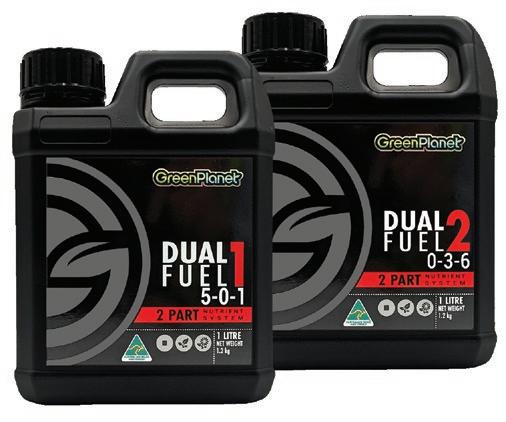
for better human
Cities are growing; the United Nations projects that 89% of people will live in urban areas by 2050. But concrete jungles are a thing of the past. Container gardens were a massive trend in 2023 that GMG predicts will continue to grow this year.
People will maximise vertical space and create privacy screens by growing food and ornamental plants in balcony and rooftop gardens. Hanging and trailing plants are predicted to be big in 2024, indoors and out. Trailing plants often require less upkeep thanks to better airflow, and gardeners also love them because they can cover a lot of ground without hogging too much space.
Trailing houseplants include String of Pearls, English Ivy, and Hoya. Edibles that do well in hanging baskets include many strawberry varieties, cherry tomatoes, cucumbers, nasturtiums, and herbs. Spilling flowers like Lobelia, potato vine, and petunias are show-stoppers and brighten any patio or balcony.



Technology is at our fingertips, yet we are more disconnected from people than ever. Many of us long for better human relationships, and community gardening movements are here to serve.
While the news headlines paint a bleak picture, people are compassionate and care about the planet and their neighbours. Now is the time to remain eco-positive and effect change locally. Look for various groups and workshops in your area!
GMG points to Gens X, Y, and Z as being passionate about sustainability and demanding it in their growing ventures and the products they buy, from clothing to hygiene and cleaning products.
Garden shops will answer the call for high-impact greenery by selling carbon-capturing plants and fast-growing native trees, grasses, and perennials. Expect to find more resources on growing food in cities and at home, planting native gardens, and replacing lawns with wildlife-friendly zones.
There are many ways to effect change in 2024. You have to dig around and find them. Whatever growing ventures you choose, stay eco-positive. You’re helping the cause.
Sources: Garden Media Group: grow.gardenmediagroup.com/2024garden-trends-report 3
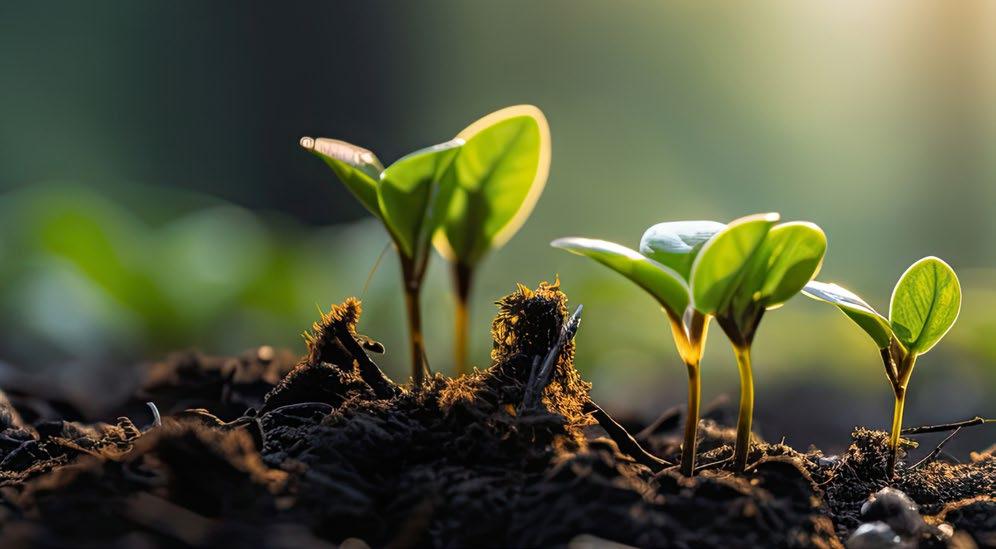
Iview the world from the perspective of an ecologist. I am fascinated by the biological and physical principles that define natural interactions. I understand that life can be challenging in nature. Plants and animals face daunting realities where their success is predicated only on the ability to grow and survive. In nature, success merely equates to passing genomes to offspring from one generation to the next. Every moment in time is vital for a plant to achieve its biological success. On the contrary, humans face different realities in life; you cannot compare human success to the natural world. This is the dichotomy of coexistence. This article shares my experiences growing, what I learned, and how it helped me define my success.
My parents were passionate gardeners. We spent weekends working in our gardens at home in my early years. As early as I can remember, with a mini shovel, I was helping my parents dig holes, plant seeds, and weed in the garden beds. When I was young, growing plants seemed quite simple: water, soil, sunlight, and a little luck. I loved growing plants in the garden; it made me happy.
Plants and animals face daunting realities where their success is predicated only on the ability to grow and survive
As I learned more about biology and the physical sciences through my studies in school, I began to view plant growth with a deeper understanding. Scientifically, biological success is defined as maintaining the continuity of life. For plants to succeed, they require certain conditions, including available water, nourishment, and a compatible environment to grow. I learned how plants could be affected by environmental stress, how biodiversity is completely regulated by climate and ecological conditions, and how plant diversity increasingly declines the further north and south one travels from the equator. In nature, the environment ruthlessly selects for plant success. Likewise, many plants have developed different physical, metabolic, and chemical tactics over thousands of
years to improve their resiliencies to environmental variability. Plants sense environmental stress, and their growth is often inhibited as they channel energy to their adaptive survival mechanisms. The plants are not just sitting there looking pretty. Biological success is a ruthless game of probability with no guarantees. In nature, plants work day after day, minute by minute, to survive and grow.
Someone once asked me if I thought plants had a consciousness. If we agree that consciousness is the state of awareness of one’s surroundings, then I believe they do. Most humans also have a conscience but navigate life with a different reality than any other organism on Earth. Humans are experts in manipulating their environment. This means that the environmental (biotic and abiotic) surroundings, which are crucial for plant success, are far less important to humans. This is only possible because humans can use their cognitive abilities to shape the world around them. Human behaviour is regulated by neurophysiological (i.e., nervous system function), metaphysical, and chemical processes that they use in tandem to shape their mental faculties.

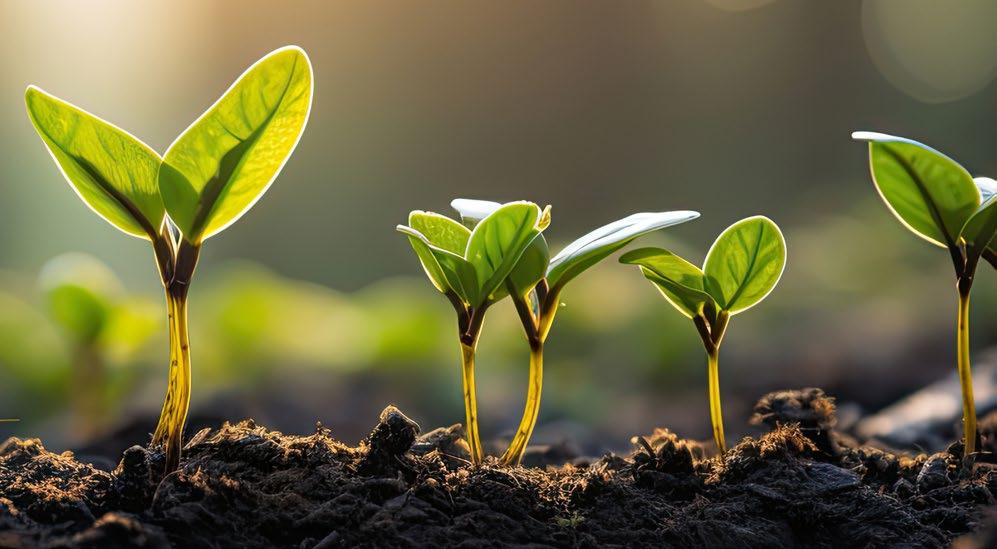
The plants are not just sitting there looking pretty
Furthermore, human perception is informed by three separate streams of the subconscious:
• reflecting: memories of the past (including physical and emotional experiences)
• the present (current state of mind and body)
• the future (thoughts of what may happen)
These subconscious inputs regulate our thoughts, moods, behaviours, and even our appetites from one moment to the next. These perceptions produce our own personalised reality TV shows directed by manifestations of the mind. Here exists the dichotomy for life on Earth: most life is bound by the concrete laws of nature, while others are the mere manifestations of the mind.
Life can be an extremely hard experience in natural systems. Plants and animals are constrained by the daunting realities of natural law, where biological success is predicated on the ability to survive, grow, and succeed with the purpose of continuity.
People, however, are not constrained by the daunting realities of natural law. If our existence was bound to the principles of biological success, then we are undeniably successful. The last
census reports indicate that the human population is expected to increase to 9.7 billion over the next 30 years. We are winning the probability game of life, but at what cost? Some predictions suggest significant challenges for biodiversity and the success of nature in the future as the human population increases.
Through ancient years, nature guided our wisdom by providing shelter, growth, health, and abundance. If biological success no longer means human success, how do people define their achievements in today’s world?
There may be answers from the simple lessons learned from my youth, growing plants in the garden. To be successful, people need adequate nourishment and shelter (environmental conditions) to grow. We need to adapt to our surroundings and be planted firmly in the moment, where we can spend our days growing and not just surviving. Human success may be a simple exercise of mental gardening, where we can cultivate all things that make us strong and happy and weed out all doubt and fear. Our success exists in a single moment and grows like a plant from one moment to the next. It can be determined only by what we are willing to do to grow today, requiring strong minds because we rely on cognition for everything. Success is the nature of learning and teaching; otherwise, we are guaranteed failure. Every moment in time is a precious opportunity to grow. This is what I learned from growing plants and how I changed how I grow. 3
BIO Colin Bell is VP of US Business Development at MIIM Horticulture. He has worked as a PhD Research Scientist in Federal and Academic institutions for years. He builds businesses, develops products, and grows brands for indoor cultivation. Reach out: colin@miimhort.com
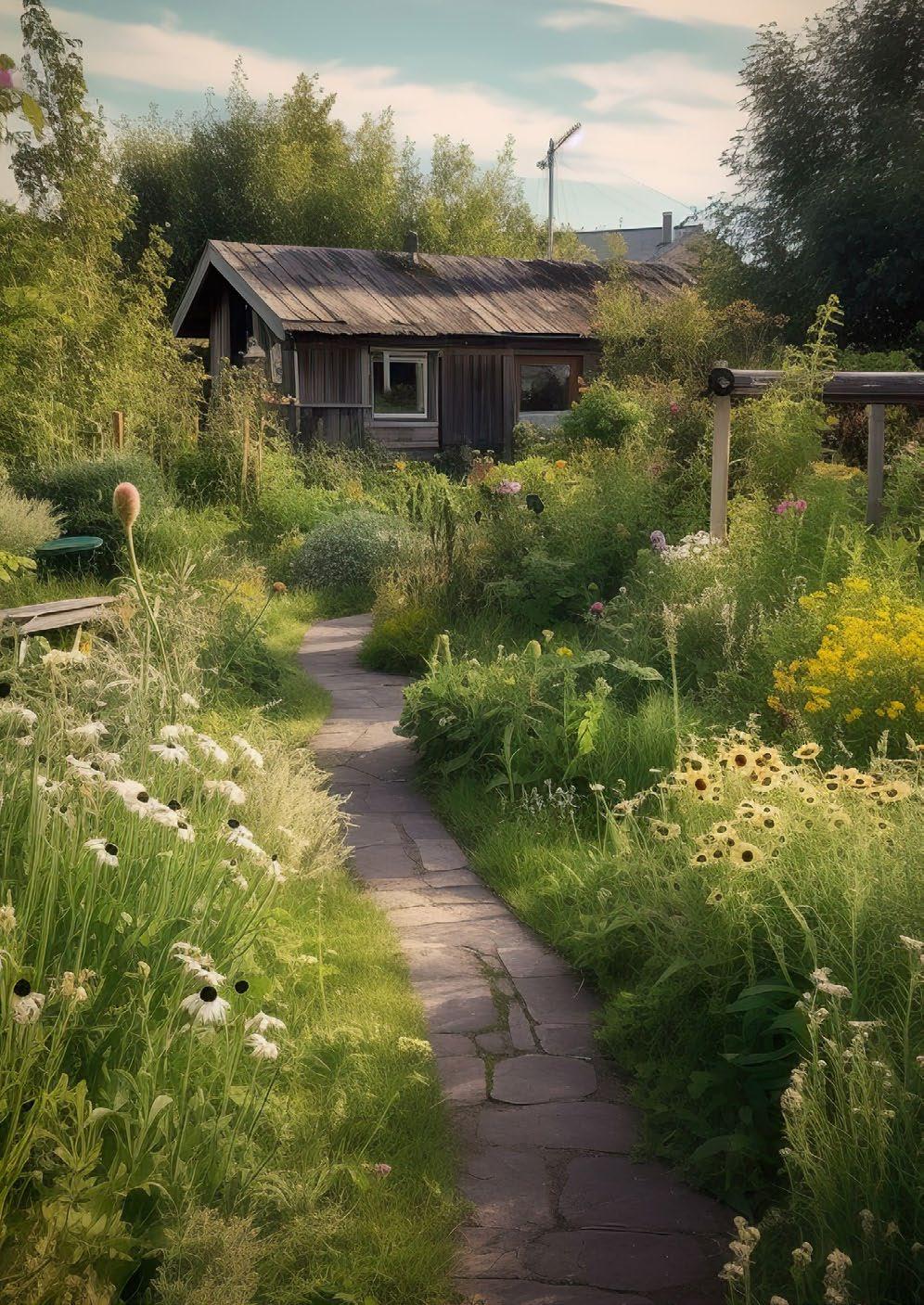
Slow gardening is a holistic approach to growing that doesn’t browbeat plants into compliance.
As much as I love my garden, for many years, it would feel like a never-ending chore to keep it refreshed and groomed at the end of the season. I’d crave winter when the garden could silently ruminate without my constant preening. That all changed once I discovered slow gardening.
Slow gardening was first made popular by Felder Rushing, an American horticulturist famous for adopting simpler and natural approaches to gardening [1]. Inspired by the Slow Food movement and its promotion of local food systems and biodiversity, slow gardening is not about being a lazy gardener. Incorporating many of the gardening practices we’re already familiar with, slow gardening promotes nature, not the gardener, as knowing what’s best for the garden.
Borrowing from regenerative gardening, weeds and wildflowers are encouraged to grow with abandon as cover crops protecting the soil. Slow gardening loves using compost and mulch to add nutrients to the earth [2]. It infuses permaculture principles and insists the gardener works with the natural rhythms of the seasons to grow [3]. And while some love the look of perfectly manicured lawns and expertly coiffed shrubs, in the slow garden, roses sprawl over fences and climb into trees. By letting go of convention, expectation, and perfection, the pleasure of watching nature returns to the gardener, and growing becomes easier. As Felder Rushing writes:
“By focusing on seasonal rhythms and local conditions, it helps the gardener get more from the garden while better appreciating how leisure time – and energy are spent.” He says, “that slow gardening is more about thinking long haul and taking it easy. Life has lots of pressures – why include them in the garden?” [4]
Slow gardening has no set rules, only broad strokes to keep in mind.
The Slow Food Movement emphasises a region’s biodiversity. Slow gardening is the same. Perennials native to a particular region are the slow gardener’s plant of choice. Coming back every year, they are a long-term investment, saving the gardener the expense of constantly replacing plants. Their roots dig deep into the soil, aerating it and increasing water retention and oxygen flow. Through photosynthesis, they absorb carbon from the atmosphere, which feeds the underground network of microorganisms that add proteins and nitrogen to the soil, offsetting the need for fertilisers.
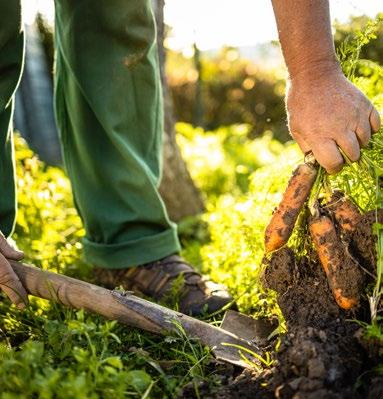
Inspired by the Slow Food movement and its promotion of local food systems and biodiversity, slow gardening is not about being a lazy gardener
These local heroes have developed a symbiotic relationship with the local climate and require less protection from weather events like drought or extreme cold. They are the foundation of healthy ecosystems and the best food source, habitat and shelter for local wildlife and pollinators who gravitate to their familiar colours and scents.
When I built my garden, I began by observing my surroundings. I determined which areas received the most sunlight and where rain collected. I also envisioned how trees in the neighbours’ yards would grow and affect my own space. Observing these nuances is part of the slow gardening way.



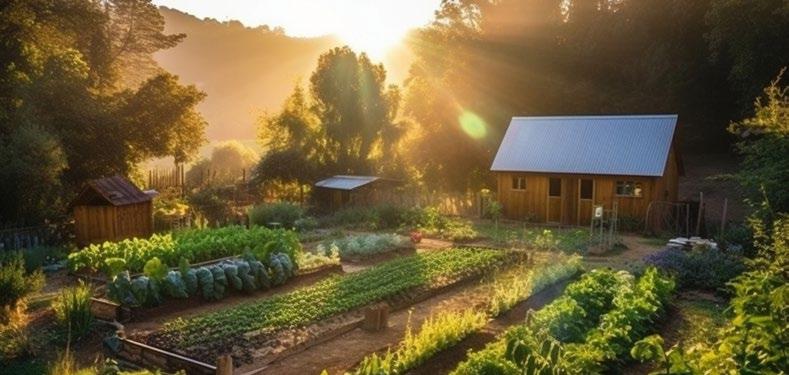
By stepping away from the need to race through the watering or pruning and taking everything in, the slow gardener begins to see the garden as its living organism and learns how to interact with its personality. It doesn’t mean doing less work but being prudent and thoughtful about your work. This approach is good for both the garden and gardener.
Health experts, including those from the world-famous Mayo Clinic, one of the largest medical research hubs, say the benefits of getting out into the garden, even as just an observer, range from getting Vitamin D from the sun to helping ease anxiety and boost mental health [5] .
People always ask my friend Pat what her secret is in maintaining her thriving garden. She advises them to plant what makes them happy. The hardest thing about slow gardening may be letting go of the preconceived idea of a perfect garden. Design styles and rules that apply to your neighbour’s or friend’s garden don’t have to appear in your space.
One of Canada’s garden legends and a posthumous member of Canada’s Garden Hall of Fame, Larry Hodgson, referred to himself as the Laidback Gardener and for good reason.
In a 1997 article in the French language magazine Fleurs, Plantes, et Jardins , he wrote, “Everyone knows that a meticulous garden, perfectly manicured, without the slightest blade of grass out of place, is an impossibility, a chimera, an unattainable goal. Nature often does better than the most precise of gardeners … But until recently, very few people had dared to admit it” [6]
I recently started a wildflower patch near the back of my garden. This spring, there were hordes of poppies and foxgloves. It was a glorious site, albeit short-lived. The foliage turned brown during the summer, and the area looked unruly. My first instinct was to cut it all back. I restrained myself, and it became one of my favourite places in the garden! The seed pods on the poppies would rattle in the breeze, and the self-seeding cosmos that replaced the earlier hoopla became a hangout for hummingbirds and bees; nature flourished.
Slow gardening isn’t about learning new practices or being a lazy gardener. It’s slowing down enough to let nature teach us how the garden should be rather than us telling nature how it ought to behave. 3
Sources
1. Slow Gardening: What It Means and How to Grow Slow (slowlivingldn.com)
2. What Is Regenerative Gardening? All The Facts (+6 Helpful Tips) (citizensustainable.com)
3. Permaculture Garden: What It Is and How to Start One (thespruce.com)
4. Slow Gardening – Felder Rushing’s Blog
5. Dig into the benefits of gardening - Mayo Clinic Health System
6. Long Live Laidback Gardening! - Laidback Gardener
Additional Resources:
• Slow Gardening - Chelsea Green Publishing
• Slow Gardening | HGTV
• Slow gardening - Wikipedia
BIO Jennifer Cole is a writer and garden enthusiast with a bachelor’s degree focused on history from Simon Fraser University, and a freelance writing career spanning two and half decades. Jennifer lives in Vancouver British Columbia. Her by-lines have regularly appeared in the opinion section of the Toronto Star and her portfolio includes articles in various newspapers, magazines, and websites across Canada. When not writing her own blog or visiting local garden centres, you can find her puttering, planting, and nourishing her own urban garden oasis.
We are ignorant creatures, utterly lost in the darkness—so ignorant that we often don’t even know that we don’t know
We are ignorant creatures, utterly lost in the darkness—so ignorant that we often don’t even know that we don’t know. Take my first foray into indoor gardening, for example. I clubbed with two hapless high school friends to ‘invest’ over $350 in a 400-watt HPS lighting system (complete with a buzzing magnetic ballast, elliptical streetlamp and comically oversized parabolic reflector). This was back in the age before hydro stores; one of the few solutions available to any budding indoor horticulturist at the time was to send a check to a PO Box advertised in the back of ‘Viz Comic’ and hope for the best.
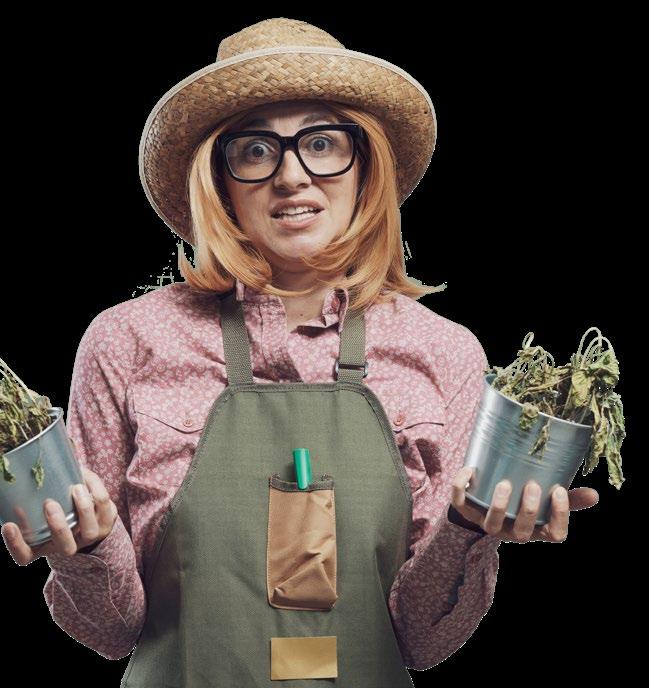
A few weeks later, the promised lighting system arrived— although we were not sufficiently illuminated to have figured out that we also needed ventilation equipment. As such we were genuinely surprised when my friend’s wardrobe—the designated space for our communal slice of horticultural heaven—quickly heated up to 100°F. Perhaps mercifully, our “extreme weather project” was abruptly terminated when my friend’s “don’t worry, they’re totally cool” parents first witnessed an otherworldly orange glow emanating from his bedroom door frame and quickly called time on our futile endeavours.
Suffice it to say, we learn by failing—or, theoretically, at least, the offer of a lesson is there. In the years since, I have made so many indoor gardening mistakes that I considered asking Garden Culture if they would commission a series. Alas, all you’ll get here is the briefest summary of my botanical blunders, mishaps, oversights, and brain farts.
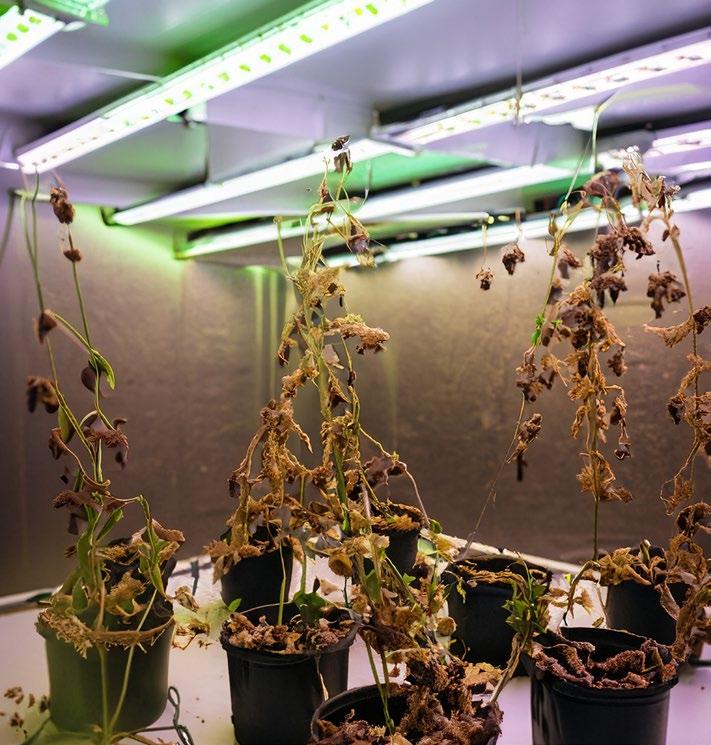

Failing to research new growing systems properly has caused me plenty of embarrassment over the years. Once, I comically over-planted two Nutriculture GT-901 NFT systems with a hundred rooted cuttings (fifty in each—and, in case you don’t know, these otherwise super-productive hobby hydroponics systems barely cover a 6’ x 3’4” area (1.8 x 1.0m) each)! Flipping my plants immediately into a 12/12 photoperiod, I thought I was a trendsetter, a maverick, a genius even. I envisaged an ocean of green floricultural paradise emerging over the coming weeks. Instead, the constant irrigation and crowded plant spacing caused extreme stem elongation. It’s one of the few crops that was so appallingly bad that I actually cut it down.
Lesson Learned: Read the manual. Less is more.
Another time, I borrowed a true aeroponics system from a very generous local manufacturer, complete with a powerful air compressor. I think the general idea was for me to grow some photogenic beasts to show off what their incredible growing system could do. The cuttings died in the first few hours. I gave him the system back with no photos.
Lesson Learned:
Promise carefully and take time to establish your plants before hitting them with full-intensity light.


I thought I was a trendsetter, a maverick, a genius even
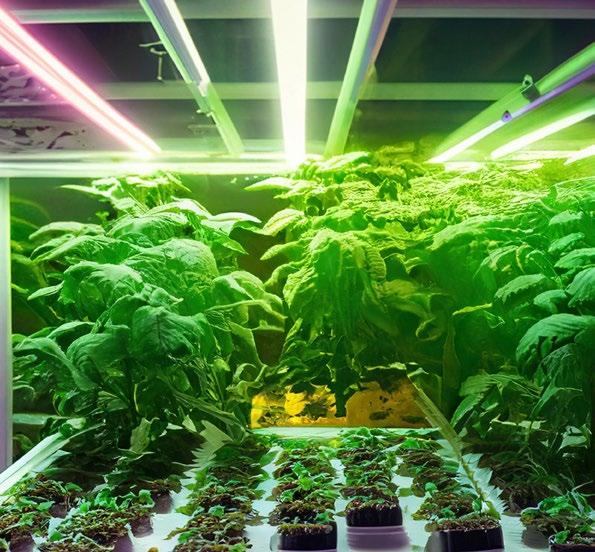
But my problems were just beginning. My grow tents suffered from high daytime temperatures in a south-facing room with large windows. Who knew? By this time, I was working with a hydroponics equipment wholesaler, and the boss foolishly agreed that I could help myself to an extraction fan from their warehouse. Naturally, I chose the biggest one I could find. At 12” in diameter, I thought my heat issues were over. Not only did it sound like I was powering up a MiG-29 twin-engine fighter jet in my top-floor apartment, but the only extract port available was in the roof at just 4” in diameter! “No problem,” I thought, “that’s what reducers are for.” So I went from 12 to 10, 10 to 8, 8 to 6, and finally from 6 to 4. What could go wrong?
Lesson Learned:
I should have paid more attention in physics class. The increased air velocity, reduced airflow, and massively increased static pressure all conspired to render my new ventilation system very loud and utterly useless.
Moving from soil-based potting mixes to coco coir, I didn’t realise I could get away with smaller pots with a soilless medium. Consequently, I spent way more on growing media than I needed to. Even when I was finally convinced to reduce my pot size, I still didn’t understand the importance of measuring the conductivity of the run-off feed solution. Switching to a 70/30 coco/perlite mix was great for the aeration of my roots, but it increased wet/dry cycles and further exacerbated my rootzone salt build-up issues.
Lesson Learned:
When growing in soilless potting mixes, never let your pots dry out, make sure you achieve 30% run-off with each irrigation, and don’t let your plants sit in that run-off!
I recently embarked on an ill-judged side-lighting experiment with light-loving, diecious plants. I bastardised a twin-bar 660W LED commercial top light and fixed it strategically on the walls adjacent to my 4’ x 4’ grow tray. (With sufficient air gaps behind, don’t worry.) However, I failed to account for the dramatic increase in water uptake driven by the additional photons. As a result, my plants quickly became draught-stressed and turned hermaphroditic! Oh, Lord.
Lesson Learned:
Increased light = increased transpiration = increased irrigation!
But wait, there’s more. Like the time I started growing hot peppers indoors in the spring, and then the summer arrived. Even with air conditioning, I couldn’t lower nighttime temperatures sufficiently to properly induce flowering. I ended up with some very tall pepper plants and a handful of very expensive peppers.
Lesson Learned:
Timing (and temperature) is everything to peppers (and maybe grow them outdoors in the summer, huh?)
In conclusion, the more you learn, the more you realise you don’t know. Wherever you’re at (or think you’re at) on your growing journey, modesty should be your stoical travel companion. Always carefully observe and note as much data as possible, including nutrient strength, formulation daytime and nighttime temperatures, relative humidity, number of days in vegetative growth, pot volume, and irrigation cycles.
Now repeat after me: Next crop, I’m gonna crush it! 3
There is a correlation between technology development and society’s mental health

Our minds are powerful and similar to a garden. Like weeding, we must be careful about the thoughts we cultivate. Positive thoughts will lead to positive outcomes. What we think leads to action, and those actions have consequences. How we view our surroundings, humanity, and the world is a reflection of ourselves and will impact how we live. But lately, the worldview is changing.
Our lives are dictated by imagery. As many people begin to favour a technology-based life, the image we once held of the natural world is fading. Society does not view the world as an oasis and is, instead, caught up in the latest trends, gadgets and gossip.
There was a time when thoughts of permaculture dominated the minds of society. Ancient civilisations worked with the environment and created massive natural gardens that sustained them. Today, we are experiencing a significant shift. From artificial intelligence to virtual reality, the focus on the technological world shapes our lives, and the results are grim. War, constant surveillance, increasing civil unrest, and global epidemics have become normal.
There is a correlation between technology development and society’s mental health. If we choose nature first, technology will adapt. But if we put technology first, will there be any room left for nature?
Our lack of focus on our natural surroundings is causing the climate to change. Forests are disappearing, yet people keep building homes in deserts and complaining that there is no water.
So, let’s do the math. Our waterways are drying up, our forests are dying off on a massive scale, and climate swings are becoming more severe. Pollution, crime, health issues, war, and technology are dominating. Our collective imagery must change. We must start envisioning our future as a bright, beautiful, green world with healthy forests and clean water. We have to imagine ways to create and maintain a stunning natural paradise. We must work with nature and put those visions into practice. What we envision for the future will inevitably manifest if enough people believe it. Let’s not forget about our mother. Mother Earth needs our help. Let’s create a better future for her. 3


if the pest numbers increase sufficiently to damage the functioning of a plant or your potential harvest, then the issue demands prompt action!



Every gardener encounters at least some problems each season. Sometimes, weather conditions contribute to pests afflicting our plants. Other contributing factors include plant stress, soil conditions, management practices, species variety and location. Problems may only be minor or for a short time and may not cause enough damage to warrant attention. However, if the pest numbers increase sufficiently to damage the functioning of a plant or your potential harvest, then the issue demands prompt action!
I play a daily ‘detective’ role, looking for ‘clues’ to identify potential problems before they get out of hand. It’s much easier to minimise damage from a few insect visitors than when numbers are in plague proportions. I examine the signs to accurately determine the cause before applying any remedy.
An imbalance of pest insects can cause significant plant damage. A wide range of indicators flag specific insects as the perpetrators. Careful observation reveals that each ‘culprit’ usually leaves telltale ‘evidence’ at the ‘scene of the crime’ that helps identify their presence. Recognising these calling cards takes time and practice, but it’s a skill worth learning. Let’s look at the symptoms or clues they leave and some chemical-free control strategies.
Caterpillars: Chew holes in stems, leaves, flowers, buds and fruit. Newly hatched caterpillars with small, hungry mouths leave tiny pin holes. They usually hide under the leaves before moving topside. As they grow, the damage increases. Holes are often round. Sometimes, a plant will be attacked by multiple caterpillars at once, with increasing destruction as they grow.
These are some of the effective control strategies I use:
• Hand-pick caterpillars or squash eggs on the underside of leaves.
• Encourage insect-eating bird species as pest controllers. Add a bird bath and habitat.
• Use molasses spray over the leaves.
• Sprinkle diatomaceous earth directly onto cluster caterpillars. I avoid spreading it around to minimise collateral damage to beneficial insects like bees.
• Plant vulnerable crops like the Brassica (cabbage) family in season to reduce potential plant stress and scent cues for butterflies.
• Cover garden beds or individual plants with netting. Use cloches, crop covers or bags to prevent butterflies and moths from laying eggs.
• Interplant with various strongly scented herbs and species with differently shaped leaves to disguise host plants.
• Grow flowers as a nectar source to attract predatory insects like hoverflies and wasps that parasitise caterpillars. A chemical-free garden will entice other hungry predators like lacewings, dragonflies and assassin bugs.
Mix 10ml of sulphur-free or blackstrap molasses into 500ml of warm water. Add 1 tsp of eco-friendly pure liquid soap or detergent to help the mixture stick to the leaves. Spray affected plants on both sides of the leaf and centre on a non-rainy day when it’s cool. Molasses is a simple sugar high in nutrients and increases the sugar content on the leaf surface. This makes it undigestible to grasshoppers and caterpillars. Soap is a desiccant and can help break down the insect’s exoskeleton or the waxy coating so it dries out. Use the mixture within a day or two because it will start to ferment in your spray bottle, especially in warm weather. You don’t want an explosion!


Grasshoppers: Like caterpillars, these herbivores munch on leaves, but the uneven damage tends to be on the edges and tips. Grasshoppers sit on the leaf even when young, so they’re easy to spot. As they grow, they can devour large sections of a leaf.
Remedies include:
• Hand-pick early in the morning when they are more docile and easy to squish.
• Leave spider webs in the garden. These insects are incredible predators and spin webs close to food sources. A web is often my first indicator of a pest insect problem.
• Use molasses spray over the leaves.
• Cover with exclusion netting, cloches for seedlings and crop bags.
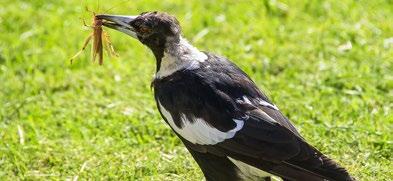
Snails and Slugs: Watch for irregular holes in all plant parts and slimy silvery trails. Seedlings may disappear overnight. These pests often hide in cool, dark, moist spots or under mulch, feed at night and tend to be active after rain.
Strategies to try:
• Encourage lizards and birds by providing habitat.
• Remove timber, weeds, dense growth, or piles of pots that offer daytime hiding places and breeding areas.
• Set a trap like a damp hessian sack, a small piece of plastic or wet cardboard. Traps like these attract slugs and snails to shelter beneath them. Lay them down in the early evening and check in the morning.
• Avoid fertilising plants with too much nitrogen; that makes them sappy and more attractive.
• Try drip irrigation rather than sprinklers to reduce humidity and moist surfaces. This makes the habitat less favourable to snails and slugs.
• Water early in the morning to allow maximum time for the plant foliage, soil and mulch to dry out. Watering later in the day causes these surfaces to remain moist overnight.
• Non-toxic copper tape is a barrier, repelling these pests with an ‘electric’ shock-type reaction. It works wet or dry.
• Protect vulnerable seedlings with cloches.
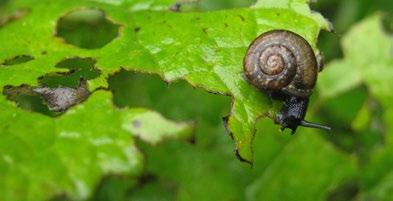

Aphids: These sap-sucking pests can become a massive problem in just a few days due to their ability to reproduce quickly. These pests need immediate attention.
Effective strategies include:
• Hand squashing or hosing off with a sharp water spray for several consecutive days when numbers are small.
• Use an organic horticultural oil or soap-based spray to suffocate them.
• Apply food-grade diatomaceous earth directly onto the affected leaves or plant parts. This fine powder is made of silica and desiccates aphid exoskeletons.
• Use a portable hand vacuum to suck up the insects en masse.
• Brush or shake aphids off the plant into a container of soapy water to drown.
• Remove ants that may be present. They defend aphids against predatory insects and farm the honeydew produced as a thank-you gift in return for their protective services.
Scale: These sap-sucking pest insects stick to stems and plants, gradually reducing their vigour. Look for white, brown or black bumps with a hard, soft or waxy shell. Like aphids, they release honeydew that can cause black sooty mould to grow. This prevents photosynthesis, weakening plants and reducing growth.
Suggested strategies include:
• Check plants regularly and remove individual scale insects when numbers are small. I slide my fingernails up the stem, and they easily pop off. An old toothbrush is also quite effective.
• Give them a sharp spray with water for several days to remove them. Organic horticultural oil will remove any remaining scale.
• Encourage natural enemies like spiders, ladybirds, lacewings and parasitic wasps to your garden.
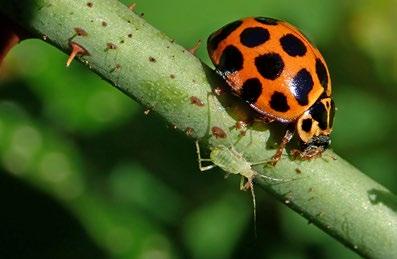 Magpie eating pest insect grasshopper
Snail chewing holes in plant leaf
Tiger spider spinning web around grasshopper pest insect to encase it
Ladybird predatory insect beside an aphid
Magpie eating pest insect grasshopper
Snail chewing holes in plant leaf
Tiger spider spinning web around grasshopper pest insect to encase it
Ladybird predatory insect beside an aphid
Adding organic matter like compost, minerals, and mulch helps add worms and microorganisms and gives plants the nutrients needed for strong growth and resilience against pest attacks


Planting a diversity of species encourages beneficial insects and minimises pests in an organic garden
Pest insects like these can also be attracted to weak, nutrient-deficient plants lacking water or heat-stressed. These factors can be prevented by applying a few strategies.
• Healthy soil. A balanced soil pH with good structure and texture will hold moisture and minerals. Adding organic matter like compost, minerals, and mulch helps add worms and microorganisms and gives plants the nutrients needed for strong growth and resilience against pest attacks.
• Careful plant selection and location. Grow plants suited to your climate in the appropriate season. Cool-season vegetables often become heat-stressed in warmer months and become easy targets for pests. Choose a suitable location – sun or shade - that meets the needs of each plant.
• Practice crop rotation for annuals. Avoid repeated planting from the same plant family in the same garden bed. Related plants within some plant families, like Brassicaceae (cabbage family), are often susceptible to the same pests. Follow instead with plants from different plant families, e.g. Solanaceae or Apiaceae, as this helps break the life cycle of pest insects.
• A biodiverse ecosystem. You can balance pests and prey by encouraging natural predators into your garden. I’ve found that planting various flowering species and providing water and diverse habitats attracts pest insect controllers like ladybirds, beetles and dragonflies. A few messy spots with fallen leaves, rocks or pebbles, tree stumps or bird nesting sites help attract an incredible species biodiversity.
• Regular observation. Daily monitoring helps catch possible problems early.
• Time planting to avoid pests. Understand pest life cycles and when they are most active. Sow plants during the most favourable season to minimise potential attack.
By learning to identify common pest insects and applying some of these suggested strategies, you can reduce plant damage and enjoy a decent harvest. 3
BIO Anne Gibson, The Micro Gardener, is an author, speaker and urban garden community educator on the Sunshine Coast, in Queensland, Australia. Anne is passionate about inspiring people to improve health and wellbeing, by growing nutrient-dense food gardens in creative containers and small spaces. Anne regularly presents workshops, speaks at sustainable living events, coaches private clients and teaches community education classes about organic gardening and ways to live sustainably. She has authored several eBooks and gardening guides. Anne shares organic gardening tips and tutorials to save time, money and energy on her popular website - TheMicroGardener.com
“in natural ecosystems, plants, with help from fungi, communicate with each other.”

Ican’t imagine Rod Stewart and Ronnie Wood (Faces) were thinking about agronomy when they sang their song ‘Ooh La La’, with its classic chorus, “I wish that I knew what I know now when I was younger”. But it can be life-altering if you’ve ever played that reflection game. How I think about agriculture has drastically changed over the years, and it is more of a philosophical difference than a technical one.

I have never been overly dogmatic about farming practices. Early in my career, I recognised that there are many ways to grow good food sustainably. But, looking back over my 35 years in agriculture, there has been a strict boundary between humans and plants. I learned that plants were not sentient beings, incapable of “consciousness”, hardwired and genetically determined to respond to environmental stimuli. Despite being a staunch believer in metaphysics and other ideas that are not explained via biology, chemistry, and physics, I was never comfortable expressing my belief that plants are sensory beings capable of thinking, feeling, seeing, hearing, and smelling.
I was never comfortable expressing my belief that plants are sensory beings capable of thinking, feeling, seeing, hearing, and smelling
Once again, most agroecology textbooks note yield losses when crops aren’t grown in monocultures, or that competition from weeds will impact yield. University of British Columbia researcher Suzanne Simard showed that in natural ecosystems, plants, with help from fungi, communicate with each other. Her research highlighted that they communicate (i.e., exchange hormones and signal messengers) and share nutrients like water, sugar, and trace elements. The notion of survival of the fittest is not surprisingly the thought paradigm in modern agriculture, despite Nature providing constant examples of ‘better together’.
For many reading this article, the previous sentence is enough for them to stop reading. However, I am not trying to equate the sensory evolution of animals with that of plants. The academy has done a great disservice in not recognising the complexity of plants, particularly their millions of years of co-evolution with microbes. Plants don’t have a central nervous system, a brain, or an endocannabinoid system that coordinates information for the entire body like animals do. Yet, plants use chemical signals that act as fast neurotransmitters and can have interspecies communication that far exceeds the ability of humans.
So, using more recent examples of our increased understanding of the plant:soil:microbial interface, I want to highlight the importance of discerning facts versus theories when implementing “sound” agricultural advice.
Most plant physiology textbooks point to three ways plants take up nutrients:
• Mass flow (water movement via transpiration)
• Diffusion (nutrient gradients)
• Active transport (proton pumps)
Whether discussing conventional or organic farming, the above has been the dominant belief for decades. Recently, researcher James White has brought attention to another way plants eat: the rhizophagy cycle. Microbes enter the plant root at the root cap; the plant then uses oxygen (superoxide) to digest some of the microbe cells to retrieve nutrients and discards the remaining microbe via root hairs. This ‘mining’ of microbes by plants may help explain why many farmers with high soil organic matter do not see nutrient deficiencies in their crops despite not adding the recommended fertiliser rates. A common estimate suggested that each per cent of soil organic matter was the equivalent of 10 to 15 pounds of nitrogen per acre per year. But we now see farmers with 5% soil organic matter having superior yields with little or no additional fertilisers.
Plants and humans share many of the same genes, and, as evidenced by transgenics, animal genes can be placed into plant genes. The similarity at a DNA level is exciting but doesn’t stop there. The relatively recent discovery that humans, in terms of cells, are more bacteria than anything else has brought attention to the notion of the microbiome, especially of the gut. The gut microbiome is responsible for much of our nutrient absorption, as well as our immune system and hormone production (i.e., 90% of our serotonin and 50% of our dopamine). The parallels for plants are striking. The phytobiome, most notably the rhizomicrobiome, is the plant’s gut and similarly plays critical roles in nutrient uptake and plant health, including immune responses.
These examples showcase how our separation from plants and Nature can lead us to false understandings of the observations we make, even in our research. Whether we place fault on extrapolations from reductionist science or our species’ hubris in needing answers, when we create divisions, we lose the interconnectedness that is a prerequisite for sustainability or, more importantly, regeneration.
Much of the agronomy I was taught when I was younger was based on a worldview that plants have no agency, hardwired to respond to inputs that we can manipulate. This mentality has led to a never-ending parade of technological fixes in attempts to keep the system functioning. In contrast, a worldview that recognises the wonder and awe of plants and is humble enough not to know all the answers is what keeps me wanting to learn more.
I started this article with a song and will finish with one. “Ah, but I was so much older then, I’m younger than that now” (My Back Pages, Bob Dylan). 3
BIO Av Singh, PhD, PAg advocates regenerative organic agriculture serving various organisations, including Regeneration Canada, Navdanya, and the Canadian Organic Growers.
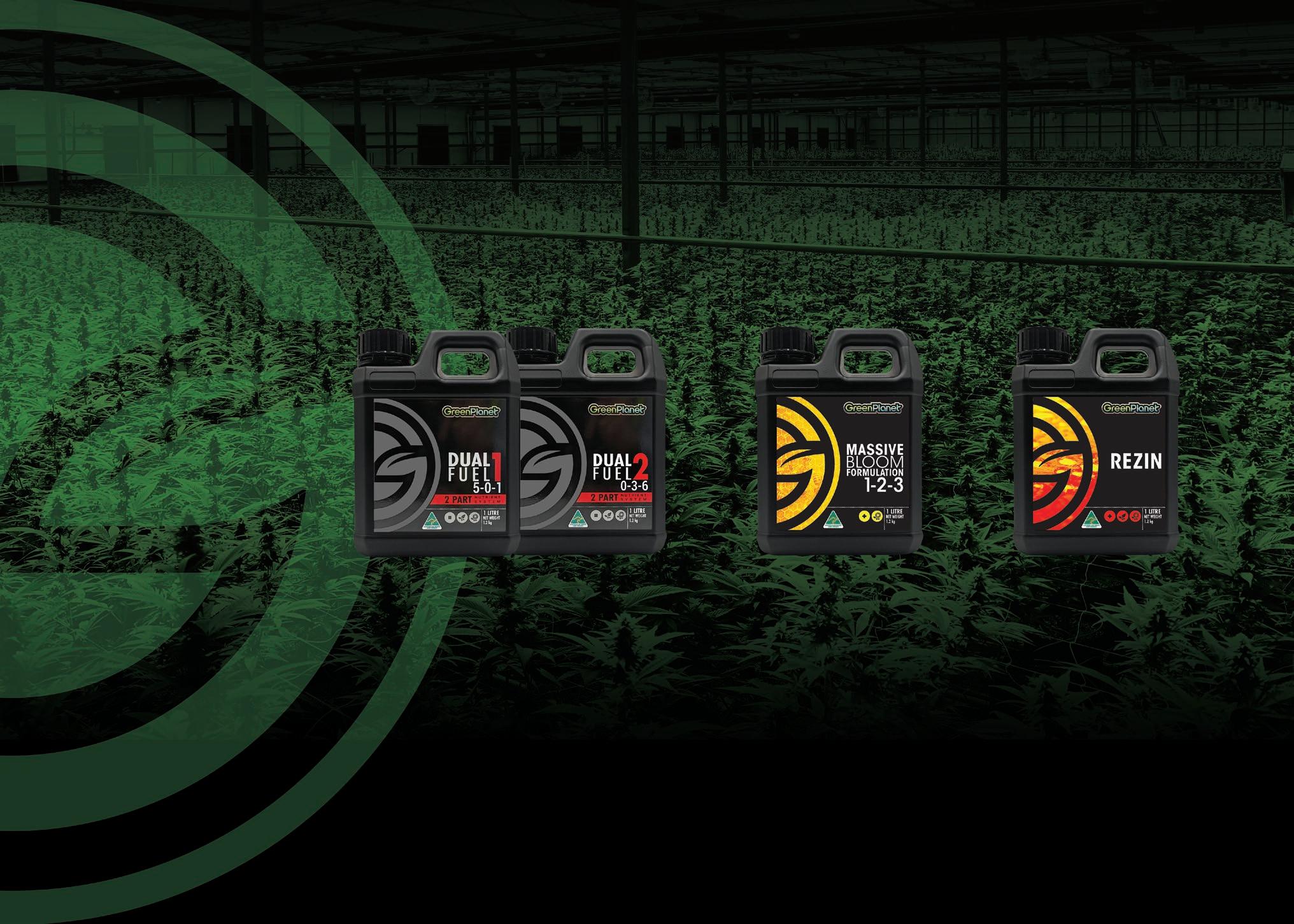
 BY JENNIFER COLE
BY JENNIFER COLE

As science looks for ways to eliminate carbon-emitting fossil fuels, growers seek ways to conserve water during drought and grow more food. Could agrivoltaics be the answer?
A2021 United States Department of Energy study predicts that solar power could account for 40% of U.S. electrical usage by 2035 [1]. Large solar farms will be created to harvest this amount of clean energy. Many of them will be on land traditionally used for agriculture; two types of farming, once incompatible, are melding together.
Joshua Pearce is an engineering professor at Western University in Ontario and has been researching and developing agrivoltaics.
“The general idea is that photovoltaic arrays [solar panels] are placed over or next to farming, gardening, or agriculture,” he explains. “Modeling suggests that if all lettuce in the United States was cultivated under solar panels, the yield would increase by 15% and solar energy in the U.S. would double.”
But don’t crops need sunlight to grow?
A 2021 United States Department of Energy study predicts that solar power could account for 40% of U.S. electrical usage by 2035
peppers, raspberry bushes and herbs such as lavender thrive under the shade of solar panels. Owner Byron Kominek is used to explaining how growing in the shade is possible; it’s the most common question he’s asked.
“Even if something is in the shade, if you can see it, that means light is reflecting off it,” he says. “More shade means plants create more aboveground biomass to capture as much light as possible.”
In other words, they grow bigger!
“Adding shade to the ground also reduces soil temperatures and keeps moisture in the ground longer,” he adds.
Jack’s Solar Garden in Longmont, Colorado, is the largest commercial research site for agrivoltaics in the United States. Three thousand solar panels produce enough solar energy to power 300 homes [2] . Lettuce, arugula, celery, potatoes,
As the planet warms, climatologists predict droughts will become more common [3] . Conserving water for human and livestock consumption will be a top priority.



Researchers at the University of Alberta found that when spinach is grown under a solar array, the plants consume up to 17% less water. Although their growth rate was slightly slower, the plant’s overall health and harvest weight remained high [4]
Lettuce, arugula, celery, potatoes, peppers, raspberry bushes and herbs such as lavender thrive under the shade of solar panels
“If you’re in a desert where even peppers and tomatoes get too much sun and heat during the day, then more shade becomes beneficial to their survival,” Kominek says.
Studies using agrivoltaics in the high heat of Arizona found that peppers grown using an agrivoltaics system had an increased yield of almost 250% [5] . How is this possible? Excessive heat can reduce the efficiency of enzymes that drive photosynthesis [6] . Creating a shadier environment under the solar panels keeps plants cool and growing.
“The most successful systems so far have been in very hot places, where there isn’t irrigation,” Pearce says.
Are there any drawbacks to agrivoltaics? Due to decreased moisture evapouration, increased humidity under the panels can introduce bacteria or fungal diseases. The capital cost of a
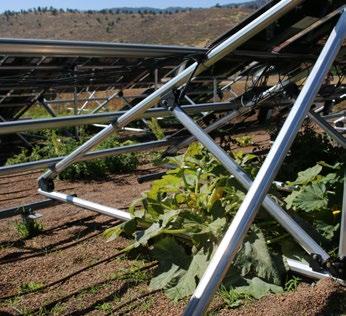
photovoltaic system is also expensive for small-scale market farms. However, in many cases, solar companies will lease a farmer’s land, set up the arrays and offset those capital costs.
According to Pearce, this method occasionally requires tweaking the position of the panels to allow for optimal harvests.
“Depending on what you are cultivating, the panels can be packed together or have space between them to let in some light,” Pearce says.
For example, corn grown with tightly packed solar panels in Japan produced lower yields. However, the yield increased when the panels were spaced to allow some light.
“It’s the cheap energy that’s produced that’s worth more per acre to the farmer, even if there is no increase,” explains Pearce.
Already popular in Europe and parts of Asia, agrivoltaics is not well known or understood in North America. Farmers have little information to cultivate crops effectively in different regions. There’s a vast difference between growing in the hot and dry Okanagan Valley of British Columbia and growing around the Great Lakes, which typically gets more rainfall.




TRANSPORT provides superior spreading and wetting capabilities that allow you to spray in full sunlight with no damage or burning.
Combine Optic Foliar TRANSPORT with any foliar solution to allow you to spray in full sunlight with no damage or burning, residuals to wash off or the need to spray the undersides of the leaves. Transport is the only spreader to maximize absorption to the plants Mesophyll Layer.
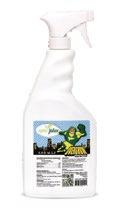
Check out our complete product line:


www.opticfoliar.com


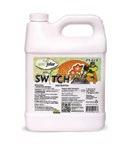


To find these answers, the U.S. Department of Energy has allocated $ 8 million (USD) to support research across six states, including Alaska and the District of Columbia [7] In Canada, the Agricultural Clean Technology Programme, administered by Agriculture and Agri-Food Canada, offers funding and support to farmers and agricultural businesses to adopt innovative technologies, including agrivoltaics [8]
The potential is enormous, not only for agriculture but for eliminating any further need for fossil fuels
The potential is enormous, not only for agriculture but for eliminating any further need for fossil fuels. Claude Mindorff is an energy consultant and director of PACE Canada LP, a global solar development and investment company. A keynote speaker at Canada’s inaugural Agrivoltaics Conference in 2022, he projects that if just 4% of Canada’s farmland converts to agrivoltaics, it will supply all the country’s electricity needs while creating a sustainable long-term food system [9]
NASA researchers predict the changing climate will dramatically impact how and where crops are grown as early as 2030. In hotter climates, closer to the equator, where corn is a stable food source, increasing heat could cause declines in yield of up to 24% by the end of this century [10]
Pearce believes agrivoltaics will change those statistics, especially in the Global South. Since October 2020, parts of East Africa have been gripped by a drought that, according to climatologists, was 100 times more likely because of climate change. Crops without shade or irrigation have wilted in the heat [11]
Byron and Alexa Kominek at Jack’s Solar Garden
But it’s not just Africa. In 2021, climate change made an early summer heat dome spanning from northern California to British Columbia worse [12] . For days, temperatures barely dipped below 100°F. In British Columbia’s Fraser Valley, 75% of early raspberry crops were cooked on the bush and could not be sold as anything other than juice [13]
“Increasing global temperatures are going to make it hotter in many places on Earth,” Kominek says. “Having additional shade can be [considered] a climate adaptation tactic.”
Agrivoltaics is a solution that reduces fossil fuel emissions and allows growers to find shade and grow more food. 3
Footnotes:
1. Solar Futures Study | Department of Energy (rebrand.ly/5eedea)
2. Solar energy Colorado | Jack’s Solar Garden, LLC | United States (jackssolargarden. com)
3. Climate change and droughts: What’s the connection? » Yale Climate Connections (rebrand.ly/911uton)
4. Could growing crops under solar panels provide food and energy at the same time? | Folio (rebrand.ly/mkaer66)
5. Agrivoltaics Proves Mutually Beneficial Across Food, Water, Energy Nexus | University of Arizona News (rebrand.ly/0a973f)
6. Rising temperatures also alter photosynthesis in a changing climate (rebrand.ly/6febb4)
7. US government allocates $8 million to support agrivoltaics – pv magazine International (rebrand.ly/d27b3d)
8. Agricultural Clean Technology Program (agriculture.canada.ca)
9. Are solar farms the answer to feeding the world and combatting climate change? | News & Events (uwo.ca)
10. Bing Videos: NASA predictions (rebrand.ly/lbxt2zn)
11. Horn of Africa: Catastrophic drought made 100 times more likely by climate change, analysis finds | CNN (rebrand.ly/mrmya1t)
12. Increased impact of heat domes on 2021-like heat extremes in North America under global warming | Nature Communications (rebrand.ly/hm9z227)
13. B.C. heat wave ‘cooks’ fruit crops on the branch in sweltering Okanagan and Fraser valleys | CBC News (rebrand.ly/e374a5)


In this issue, we’re looking at commonly experienced problems and discussing possible resolutions. While it might seem like the enthusiastic, overly-simplified ravings of someone new to the world of all things mycological, I’d like to propose that the solution to all problems is, put simply, MUSHROOMS!
Do the cost of groceries and lack of food choices make you feel “common”? Crash the upper class (even just for a day) by making it fancy with fungi! The mere addition of uncommon mushroom varieties to the menu elevates the experience of a meal and can make you (and lucky dining companions) feel you’ve joined society’s elite.
Having trouble finding “common ground” and figuring out what passes for “common sense” these days? Mushrooms!
In all seriousness, some of the most vital things we hold in common, whether country or city dwellers, are simply the results of being living entities in human cultures on Planet Earth. We share common concerns, urgently tending to what we can in the present and strategising for future generations’ ability to thrive. In the wild, mycorrhizae often bridge multiple entities, mediating flows of nutrients and nurturing mutually supportive relationships.
Experimenting with the flavour, you may find the resulting broth appealing enough to drink as a tea on its own, or you may prefer to use it as a base liquid for other immune-supporting herbal teas. Though the mushrooms are coarse and challenging for the body to digest, turkey tail broth is an excellent way to flavour soups or stews and boost the body’s resilience under stress.
Alcohol extraction to tincture is the most effective way to make turkey tail’s beneficial, non-water soluble components readily available. There are many techniques for tincture-making, but a simple folk method is to immerse dried mushrooms in food-grade, high-proof alcohol in a closed glass container for several weeks. Following this, use the mushrooms to make a decoction. The two liquids, strained of solids, can be combined into one ‘dual extracted’ tincture that will be shelf stable and easily used regularly.
Turkey tail mushroom is the most obvious choice for anti-viral, total immune-system supporting action
Here are some practical tips for working with mushrooms to address these common concerns.
Turkey tail mushroom is the most obvious choice for anti-viral, total immune-system supporting action. It’s one of the easiest wild mushrooms to identify and is found all over the globe. It’s such an aggressive wood decomposer. Turkey tail is not challenging to grow on a hardwood substrate or inoculated logs. It’s also relatively dry, so preserving and using it throughout the year takes little effort. Hang torn-up, fresh-collected fruiting bodies in a paper bag or basket for a short time in a dry room (the same way you might dry herbs like nettles or sage), and you should be golden.
Simmer turkey tail in water for at least 30 minutes at a temperature just below boiling. The pot should be steaming, not bubbling. The longer you brew the decoction, the more concentrated the medicine, as the water evapourates.
Some fancy forest mushrooms are easy to identify, and others are frequently available in “just mist it”style grow kits. Cheaper than an imported bottle of wine, and with health benefits to boot, treating yourself with homegrown gourmet mushrooms seems like a multi-course “of course.”
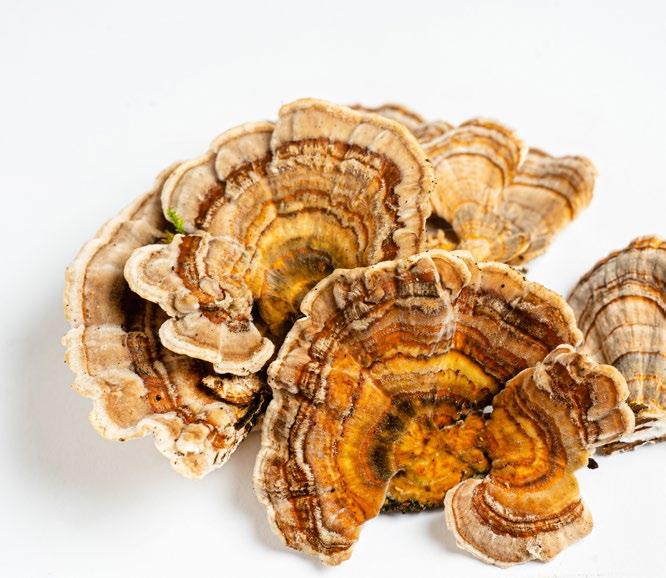





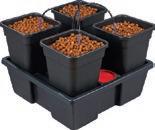

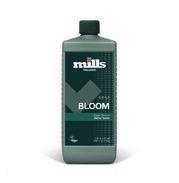










If cooking with delicate wild varieties, take flavour cues from their scents and build elegant meals around them with simple, inexpensive ingredients (pasta and grains are good go-to’s). Make sure to visually feature the mushrooms by leaving the little ones whole and tearing or slicing the bigger ones into large enough pieces to remain identifiable on the plate.
Use fungi in recipes to make you feel you’ve transcended to new heights of luxury. Think pressed, marinated, and seared lions’ mane steak, seaweed-infused king oyster ‘scallops,’ and shiitake caviar.
Suggested species include black trumpets, chanterelles, hedgehogs, corals, or others that keep their unique characteristics after cooking. Lions mane and shiitake are among the easiest to cultivate and are also hearty and generous when adding gravitas to a dish.

Lions mane and shiitake are among the easiest to cultivate and are also hearty and generous when adding gravitas to a dish
Bonus points: if you’re already growing for your family or community, seek opportunities to collaborate with mushroom growers in barters of fresh produce, co-promotion, or labour exchanges (e.g., you grow their vegetable starts, they make you an inoculated mushroom log or patch).
I may be preaching to the choir here, but if you’re reading this magazine and have never given it a go, consider the options. Mushroom fruiting kits are an excellent way to build a base in mushroom culture care. It’s like getting a cake mix from the store: you have to do some of the work, but it’s meant to bring deliciousness into a beginner’s reach. Lions mane have traditional and contemporary scientific benefits for brain health. At the same time, any mushroom you grow will also bear many generalised and niche properties well-documented for human wellness practices.
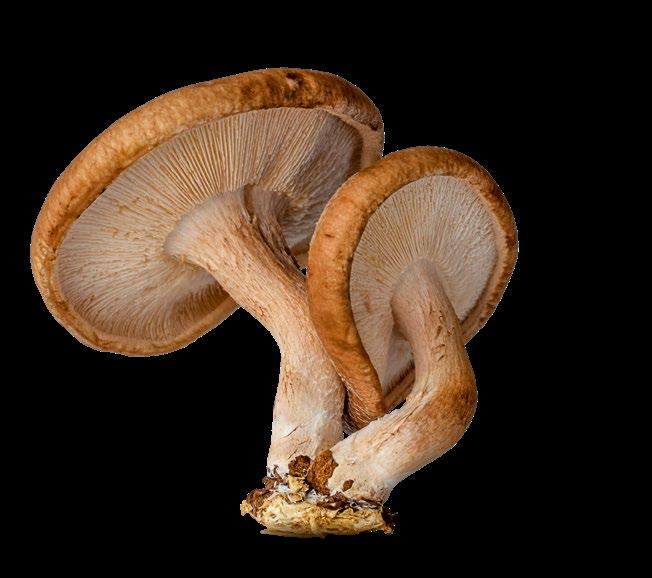
If pouring through forums and grazing grow books isn’t your thing, one of the online “learn to grow” courses might provide the support and structure you need to extend into mushroom cultivation confidently. Sample cultures billed for personal microscopy research are easy to come by via online vendors in many places, like seed banks, but for fungi.
Finding the necessary assembled gear is becoming more commonplace, unlike all-in-one indoor gardening set-ups. Consult the folks at your local grow supply about what you may expect to spend, and weigh your experience and resources against the quality of the offering. Growing mushrooms is like any other cultivation project: it can be simple and low-tech, accessible with a small budget, and a creative do-it-yourself approach. It can also become a passion that demands as much attention and investment as you can afford. You’ll find your mycological middle way.
Renouncement of responsibility: Your well-being is in your own hands whenever you consume wildcrafted or homegrown fungi. Research, become empowered, and use it wisely. 3




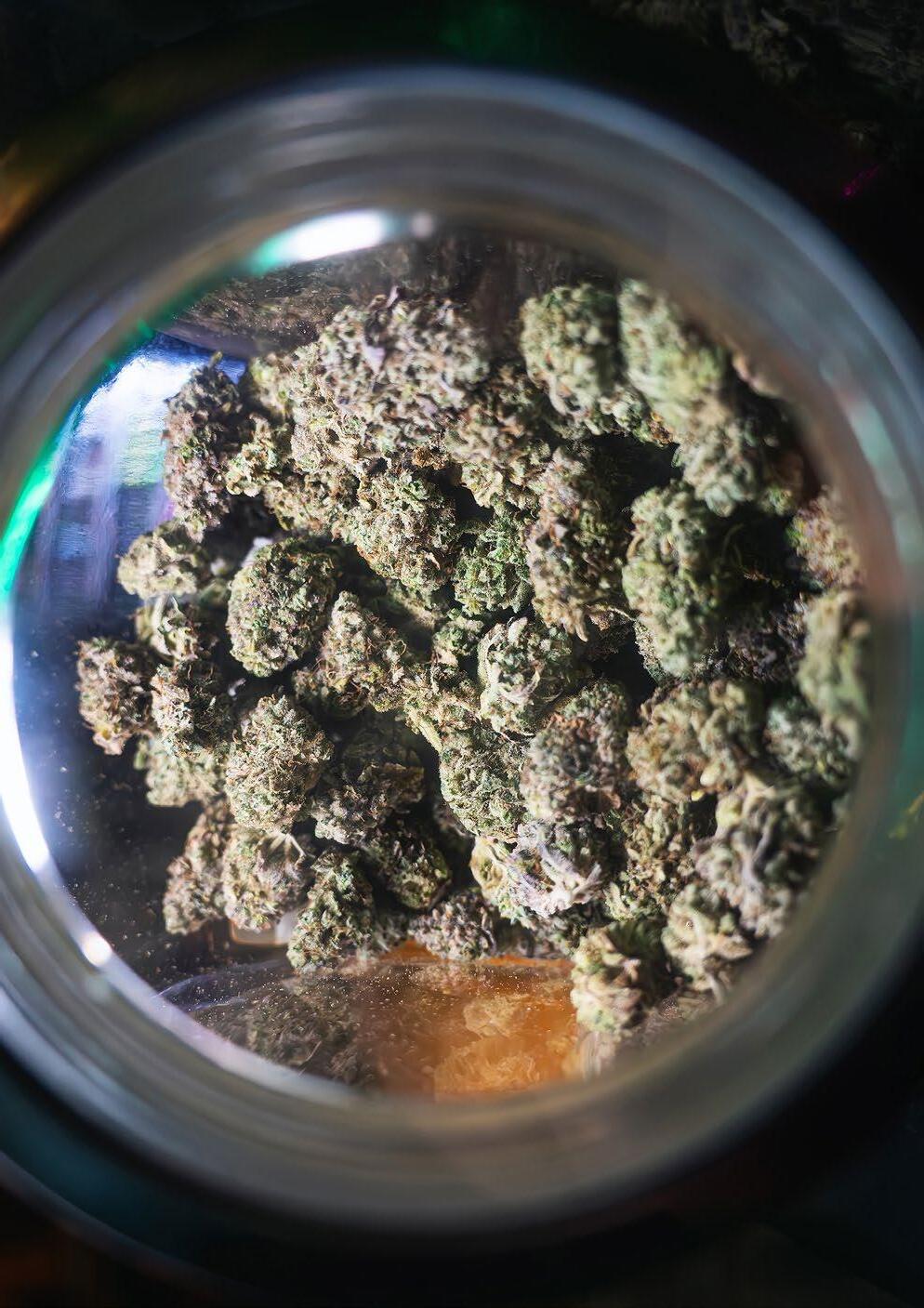
Curing is to cannabis what aging is to wine: an informed practice in patience that results in stronger flavour and aroma, optimal product aesthetic, and increased potency. The final stretch of cannabis processing, curing is done by all growers. But it’s becoming more popular among growers dedicated to providing the best possible flower they can produce.
I highly recommend curing for anyone interested in creating high-quality cannabis
I highly recommend curing for anyone interested in creating high-quality cannabis. Still, there are a few things to remember before diving in: it will take you more time to complete, which means it will also cost you more money. There are curing solutions that speed up the process to grant you the best of both worlds—know that if you go the quicker route, you’ll be sacrificing product quality for turnaround time.
If you don’t dry your cannabis properly, your curing process won’t do much for you in the way of enhanced quality, efficacy, and potency
Again, speeding up the curing process isn’t recommended—especially if you want a high-quality product. But for growers in a pinch looking to shave time off the cure, here are some tips.
Looking to reduce your flower’s timeline from seed to savoring? Take a closer look at the previous step: drying (article in Garden Culture #US53). There are a few methods for speeding up the drying process; just keep in mind that, similarly to curing, cutting corners with the dry will result in an inferior product.
•
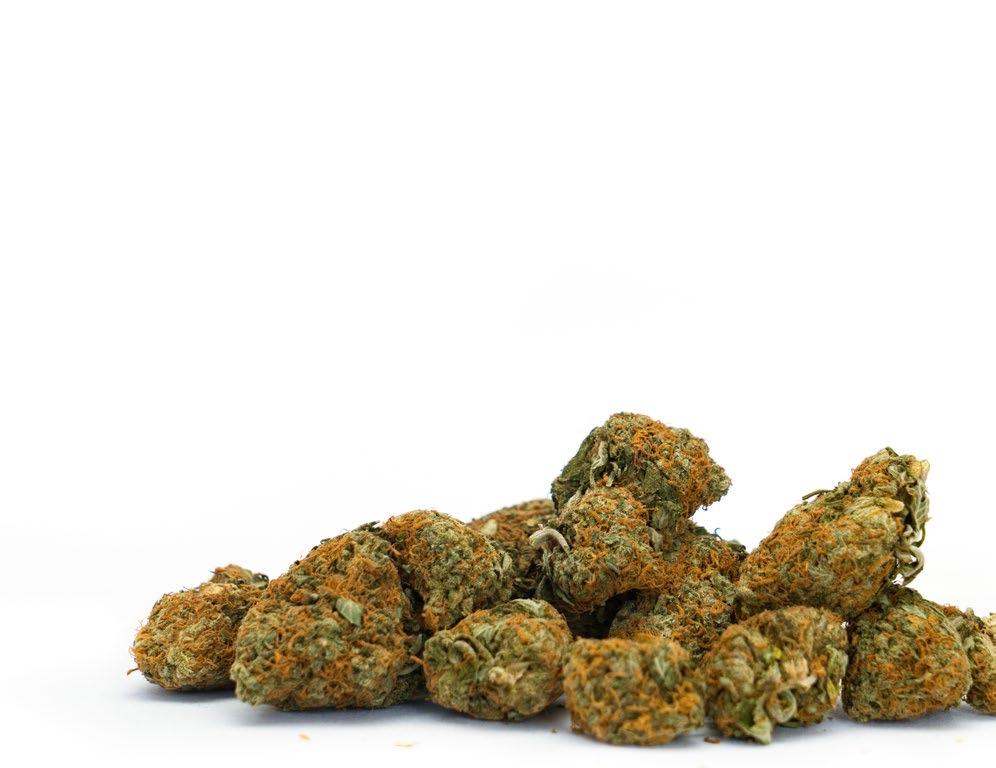
Similarly, you can play with your flower’s ambient temperature if you want to try to speed up the curing process. It will have similar damaging effects but help you get through the production timeline quicker.
Your flower should live in an RH of about 58-62% for a proper cure. However, you can speed up the process by messing around with these levels and playing outside of that predetermined box. But remember: your product’s quality will suffer as a result.

Our blog is where we bring you more than we can cover in our print issues; timely news, growing tips, and great ideas. Hundreds of growing articles are waiting for you.
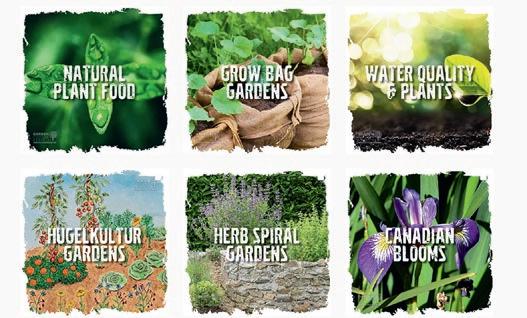

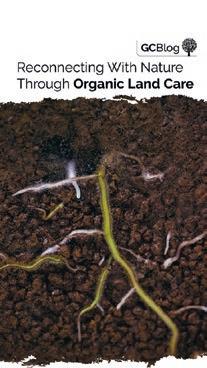

It’s an art; take the time to learn the technique that works for you and run with it!

Now that we’ve discussed the quick-and-dirty options for curing flower, let’s dig into what it takes to accomplish a thorough, high-quality cure.
• Conduct a proper, thorough dry
The first thing you can do to set yourself up for a great cure? Make sure the drying process is flawless. Slow and low, that is the tempo (as the Beastie Boys once sang). If you don’t dry your cannabis properly, your curing process won’t do much for you in the way of enhanced quality, efficacy, and potency. Do right by your cure—and your flower—by showing up to the cure stage with an an optimal product that has received ample love and attention beforehand. This includes a proper trim before curing.
• Use technology for the cure
While many growers cure their flower in glass jars or bags, this isn’t very effective in getting the best possible results, as it’s nearly impossible to maintain three very important elements. This includes desirable moisture levels, low O2 levels in the headspace, and a void of any UV light. This is a big challenge for glass and turkey bags.
I recommend swapping out your jars and baggies for modified atmosphere packaging to ensure you have proper control over these determining factors. The only cannabis-specific solution with this technology is TerpLoc.
• Keep a close eye on moisture content
An optimal cure will host cannabis at a 10-12% moisture content in the flower: the range you’ll want to keep in mind if you’re going for high-quality flower. The ideal relative humidity is 58-62%. A little under or over is okay. You might want to invest in a moisture meter and a hygrometer to stay on top of this. These devices will help
you keep an accurate moisture reading. The moisture meter is used to track the bound water in the bud. On the other hand, the hygrometer is used to monitor the ambient moisture (i.e., relative humidity) within a given space. No matter if it is a jar, bag, or tote.
• Maintain your patience
As with anything cannabis-related, patience is key for a proper curing process. The longer you cure your buds, the more effective the process will be, like that fine, aged wine. Start low, take it slow, and remain closely in tune with your flower as it develops. If you listen closely, it will always tell you what it needs. Non-MAP solutions will require daily ‘burping’ and agitation of the bud for approximately 10-14 days.
If you want to level things up, consider aging your flower. This was a trick I learned from Italian growers years ago. When using pouches equipped with TerpLoc, this just means leaving the bags sealed for two to four weeks beyond the standard two-week cure time. If going old school with glass or turkey bags, cease burping after the first two weeks and leave the jars sealed for another four to six weeks. You will be amazed by the different profiles of the terps and aromas.
Always remember, there are many variances when it comes to post-harvest, just like the growing process. Different factors, including your geographical location, play a role. The level of humidity in places like Jamaica, Hawaii, and Florida are far different than those growing and processing flower in Spain, Nevada and Arizona. The ambient temperature and humidity are the two biggest variables to contend with. It’s an art; take the time to learn the technique that works for you and run with it! 3
 BIO: Lance C. Lambert spent years cultivating brands and telling stories in mainstream digital media and marketing before joining the legal cannabis industry in late 2013. In 2022, he was named Chief Marketing Officer at Grove Bags, where he’s tasked with growing the company’s footprint at home and in emerging markets around the globe.
BIO: Lance C. Lambert spent years cultivating brands and telling stories in mainstream digital media and marketing before joining the legal cannabis industry in late 2013. In 2022, he was named Chief Marketing Officer at Grove Bags, where he’s tasked with growing the company’s footprint at home and in emerging markets around the globe.
What happens when edible plants are used as ornamentals? An edimental garden, of course! Jennifer Cole tells us what it is and how to build one. Find other garden ideas and ways to become more food secure at GCMag.co

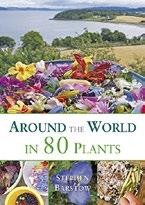
Ornamental perennials are those long-lasting plants that bring colour and glamour to the landscape. Many are edible and are finding new purposes in the edimental garden.
In his book Around the World in 80 Plants: An Edible Perennial Vegetable Adventure for Temperate Climates, author Stephen Barstow coined the word edimental. Fusing the aesthetic characteristics of the gardenscape with the practicality of growing nutrient-rich foods, these plants are both familiar and surprising.


Lavender, for instance, is grown for its landscape qualities and is commonly added to salads and other dishes for flavouring. The hosta plant, known for its attractive leaves and dominance in shady gardens, is called goboshi in Japan and is added to soups and stews.
The edimental garden is unique because it creates a holistic experience that turns the entire landscape into an edible harvest.
Perennial edimentals, unlike annual vegetables, can withstand climate change weather events such as heat waves, drought, cold, and heavy rainfall. Their ornamental characteristics often include blooms, so pollinators like bees, hummingbirds, and insects love them. Therefore, these plants support biodiversity year after year.
Another bonus? The annual vegetable patch will supply harvests from late spring to fall but needs to be re-seeded yearly. Edimentals are cultivated with the idea that they will return annually.

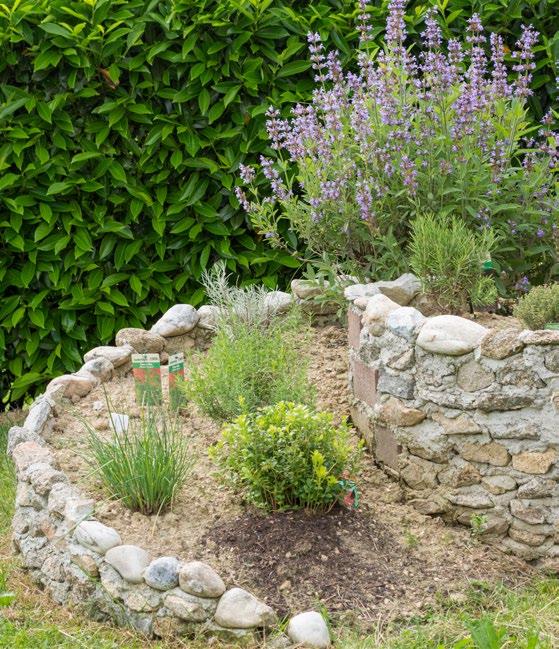
An edimental garden, like a food forest, is all about layers on a small scale. Trees and fruit-bearing shrubs like blueberry or raspberry create a natural canopy for edible shade plants such as hosta or fiddlehead ferns. Sun-loving edibles like Shasta daisies or self-seeding sunflowers live outside the shade zones bordering the garden’s sunny edges.
Herb spirals add dimension while using the earth’s rotation to grow shade and sun-loving perennial herbs such as chives, yarrow, or echinacea. Edimental gardens are great for the urban landscape and can often be planted in containers on urban patios or balconies, adding decorative appeal alongside food security.
The key is to choose the right plant for your climate. A passion fruit vine, for example, produces exoticlooking flowers and tasty fruit but won’t withstand the deep freeze of winter. And remember, perennials get bigger every year, so when planting, give them space to spread out.
Unlike the ornamental garden, remember that what you put into the soil, you are also putting into yourself. Replacing pesticides and fertilisers with compost and natural soil augmentations such as coffee grounds or kitchen scraps will create healthy plants and a healthy you.
The list of edimental perennials is long and includes garden favourites such as the popular daylily, whose blossoms (like squash flowers) can be turned into fritters or stuffed with rice and other vegetables. Before planting edimentals, research which perennials are edible and can be grown in your region.
The David Suzuki Foundation has a section dedicated to edible perennials, and there are great articles to be found on the Permaculture Research Institute site.
Just imagine a garden full of beautiful blooms and every single one of the plants harvested for its edible goodness. In an era when foraging for food and community-based food forests are increasingly popular, edimentals are another way to create personal food security year after year. 3
Sources:
• ecohome.net: A Guide To Growing Edible Perennials (rebrand.ly/641cf0)
• davidsuzuki.org: How To Grow Edible Perennial Plants (rebrand.ly/1c4690)
• permaculturenews.org: Ornamental Plants That Are Edible and/or Edible Plants That Are Ornamental (rebrand. ly/149477)
Even after years of gardening, the thrill of opening a new pack of seeds never gets old
There’s something special about starting new seeds, isn’t there? Even after years of gardening, the thrill of opening a new pack of seeds never gets old. However, some seeds can be costly, so beginners need to get the basics right to avoid wasting time and money. Let’s dive into the essentials:
1. Choosing the Right Seeds: This tip is crucial! Take the time to source a reputable breeder instead of impulsively buying from a random pollen-chucker on Instagram. I have been using a Dutch seed supplier in operation since the 1980s. (Hint: “Masters at Work.”) I can vouch for the consistent quality of their seeds and the passion that goes into making them. Also, buying seeds only when needed is best unless you’re snagging a limited-time offer. When you acquire seeds, store them in the fridge until you’re ready to plant.
2. Correct Seed Depth: A helpful rule of thumb is to plant seeds at their own depth. Tiny seeds (like onions) can be lightly pressed into the growing medium’s surface and then covered with a thin layer of soil or vermiculite. Bury bigger seeds no more than their width. If you’re dealing with larger seeds that are scarce, challenging to germinate, or pricey, try placing them between two layers of a moist paper towel. Once you see a root, carefully transfer them to your propagation medium.
you can avoid common mistakes and enjoy watching your seeds grow into healthy plants
3. Use Specialist Propagation Media: Opt for a propagation potting mix specially designed for seed starting. It should be lightweight, sterile, and well-draining. Alternatively, consider Rockwool starter cubes, which are fibrous cubes ideal for seed germination. No need to add nutrients; plain water works fine.
4. Consistent Moisture Levels: Overwatering and underwatering are common issues when caring for seedlings (and cuttings). Your potting mix should stay consistently moist, not soggy. A spray bottle is perfect for gently misting the surface, avoiding seed displacement. Seeds can suffocate and rot if submerged in water, so be mindful of this. To help retain humidity, cover your pots or trays with plastic.
5. Temperature Control: Temperature is vital for seed germination. Seeds and seedlings prefer stable temperatures. That’s why some growers prefer 24hour light cycles post-germination. For warm-season plants, aim for 77 to 81°F (25 to 27°C) while your seeds germinate. If using a propagator, monitor the internal temperature with a thermometer. In case of excessive heat, try raising your propagation lights, opening vents, dimming lights, or boosting ventilation. For cooler conditions, a heat mat can help maintain the right temperature. Always connect your fan to a thermostatic speed controller. Modern speed controllers have humidistat-based control, too.
6. Adequate Light: Many seeds don’t need light for germination, and some are even hindered by it. But post-germination, seedlings need ample light to grow strong. Insufficient light leads to seedlings that are tall, thin, and weak (often referred to as “leggy”).
7. Avoiding Damping-off: Damping-off is a fungal disease that can quickly kill seedlings. It is caused by overwatering and poor air circulation. To prevent it, be cautious when watering and ensure good air circulation. A fan can help. Look for seedlings that suddenly collapse, with a thin, darkened area at the soil line – these are signs of damping-off.
8. Transplanting Carefully: Once your seedlings have at least two sets of true leaves (the leaves that appear after the initial seed leaves), they’re ready to transplant. Handle them gently to avoid root or stem damage. Acclimate them to their new environment gradually by exposing them to outdoor conditions over several days.
9. Take it Easy on Fertiliser: A Young seedlings are sensitive to nutrients. It doesn’t take much to cause nutrient burn, which can damage them. Start fertilising only when they have their second set of true leaves. Use a balanced, water-soluble fertiliser at half the recommended strength, gradually increasing as they grow.
Propagation is an area where every new grower should focus. It might require a fair amount of attention to detail, but with the proper techniques and daily care, you can avoid common mistakes and enjoy watching your seeds grow into healthy plants. 3
Everest Fernandez is a well-respected industry educator, veteran hydroponic grower and grow light enthusiast, based in France. He works primarily as a marketing and cultivation consultant and was the founding editor of Urban Garden Magazine in the UK, US and Canada. He also writes and researches for the popular hobby horticulturalist YouTube channel, Just4Growers.
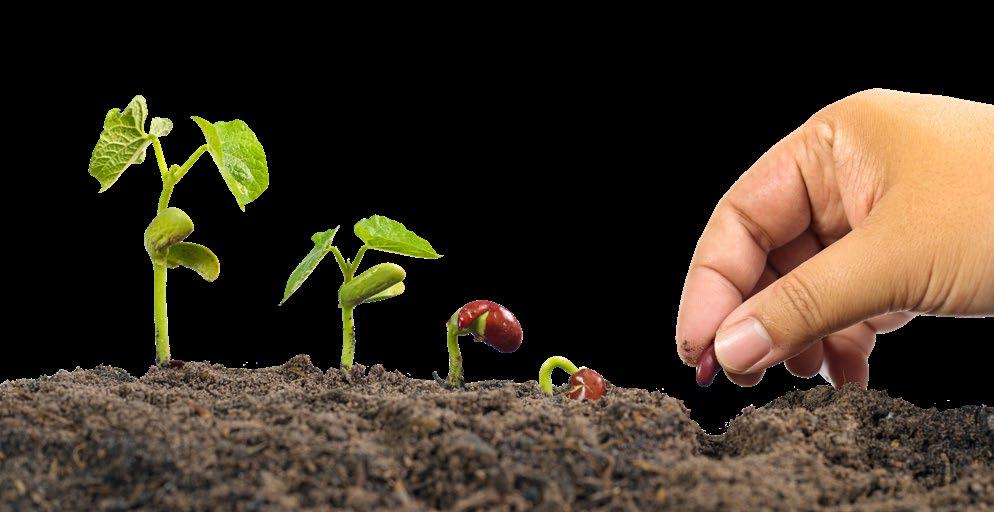

Development on flood plains has removed acres of land which formerly served to absorb floodwater and collect silt
With the atmospheric changes brought about by climate change, drastic weather events can cause flooding. Greater snowmelt, reduction in acres of floodplain, and increases in the square footage of impermeable surfaces add to the severity of damage.
Property owners aim to keep all rainwater on site, allowing it to percolate into the ground to maintain groundwater levels and supply adequate soil moisture for our plants. In communities with heavy rains, the runoff from streets and sidewalks cannot be absorbed by lawns, gardens, and other vegetated areas as it moves toward storm drains and ravines. Areas without storm drains and on level ground rely on gravel pits located away from the home, landscaped swales, and drainage tile directing the water away.
Use native plants to create a habitat for butterflies and bees, but also because the long and vigorous roots of these plants help hold the soil and absorb water

Development on flood plains has removed acres of land that formerly served to absorb floodwater and collect silt. Watersheds are areas that drain into a river or basin. The Mississippi River watershed, for example, is fed by other streams and rivers in 31 states and two Canadian provinces and covers 1.25 million square miles. Vegetated by forests and prairies, this landscape provided thick sponges to capture floodwater. Smaller watersheds in other parts of the U.S. also absorbed water. When rivers and streams spill over their banks, the now diminished floodplains cannot absorb the water, and it flows downhill onto farm fields, towns, and cities.
Observe the existing slopes and drainage patterns in your yard. Encourage water to move away from the house with proper grading (2 to 5% slope). Thoughtful grading of the entire yard creates opportunities to garden successfully without damage from heavy rainwater. Any hard or paved surfaces will produce fast-moving water that will cause erosion and soil loss during storms. Plan beds around patios and along walks to absorb the water. Plant densely, closer than may be indicated in plant descriptions. Perennials and grasses placed 8 to 12 inches apart on a grid create an attractive ground cover. You will need less mulch, but you should still add shredded bark where the pieces will knit together. Use native plants to create a habitat for butterflies and bees, but also because the long and vigorous roots of these plants help hold the soil and absorb water. Choose plants that will tolerate periods of wet soil.
Be creative when finding ways and places to slow down and store moving water. Attractive flat cobbles with rounded edges in areas where water travels or collects will slow water and give it a place to collect briefly. Areas of native grasses or sedges, chosen for sun or shade and tolerance for wet soils, will allow the water to percolate into the ground.
Many gardeners build rain gardens in their yards to catch and hold water, allowing it to seep or percolate slowly into the soil and groundwater storage. Add more than one rain garden; they can help you create a sustainable landscape with rain barrels. The rain garden needs to be at least 10 feet from the house. The most important preliminary step is to assess the permeability of the soil. If the predominant soil type is clay and the absorption is too slow, a rain garden will not be successful. Use a source like IowaStormwater.org to learn how to determine the absorption rate of your soil. Your yard needs enough slope to allow water to run away from structures and towards a rain garden. The best part of making these gardens is choosing the appropriate native plants. Find them on the same website and in many other publications.
If your site is very flat, you can build raised beds for vegetables and flowers. Plan so you are not building a slow-draining pool; the bottomless planting box must drain well. Use light, well-draining soil so your plants will not drown. Remove the sod under the box and loosen it.
Begin rebuilding your gardens from flood damage by assessing and improving the soil to allow water to percolate into the ground. Information on soil structure is available from state extension offices in the U.S. Simply put, a mixture of clay, sand, and loam will allow percolation and the storage of plant nutrients. Pay attention to the required conditions of the plants you choose.
Lawn serves many purposes, including play and movement around a yard. When your landscape requires lawn areas, improve the health of the grass and its absorption ability with soil restoration, including aeration and the application of ¼ to 1/2 inch of compost.
A vegetation-covered yard can better recover from inundation than an unplanted landscape. Consider the wildlife in your area and create a habitat for them to live, reproduce, and stay safe during flooding. These habitats will increase infiltration by slowing down water and improving the soil. Plantings of shrubs and perennials cover wildlife and catch the wind that blows rainwater.
Consider permeable materials like crushed and compacted rock and pavers when your landscape plan needs hard surface areas for walking and entertaining. These stones are designed to leave spaces where water can infiltrate the ground.
Consider the wildlife in your area and create a habitat for them to live, reproduce, and stay safe during flooding. These habitats will increase infiltration by slowing down water and improving the soil

After a flood, once personal injury and damage to a home has been addressed, thoughts turn to the garden and plants.
When healthy soils are saturated with flood water, they can suffer long-term effects. The balance of microorganisms, organic matter, and oxygen is altered.
Flood water infiltrates the soil and, depending on the depth, is described as aerobic (with air or oxygen) or anaerobic (without air). When water fills the ground up to the surface of the water table, the surface may appear dry. All air spaces (voids) fill with water in waterlogged or saturated soil.
The main problem with saturated soils after flooding is anaerobic conditions. This means the active oxygen exchange by plants, or respiration, cannot happen. Also, roots cannot take up nutrients, resulting in root death. These roots cannot be brought back to life. A portion of the above-ground plant dies as well.
1. Shrubs: Prune off damaged tips of twigs and branches with clean cuts. Do the same with bent or broken limbs.
2. Trees: Remove debris and silt accumulated on one side of the tree from fast-moving water. This may allow you to straighten a trunk constrained by the weight of debris and excess soil.
Check all trees on your property for deposits of soil and debris left by the flood. To prevent root rot, when soil is deposited on top of the entire root structure, carefully remove the deposits and return the soil level to what it was before the flood. Sometimes, the soil has been washed away and needs to be replaced with fresh earth.
3. Lawn: Carefully grade the landscape to smooth out and fill mounds and cavities caused by the moving flood water and debris carried by the water. Be sure to remove all debris and deposits of silt before grading. Weeds and diseases can be carried in both, so monitor your garden carefully as it recovers and grows.
These repaired and nurtured gardens will continue to sequester carbon, keeping it from entering the atmosphere in the cycle that is the engine of climate change. 3
1. Climate-wise Landscaping: Practical Actions for a Sustainable Future by Sue Reed and Ginny Stibolt
2. Landscape Design: Theory and Application by Ann Marie VanderZanden and Steven N. Rodie
3. Living on Flood Plains and Wetlands: A Homeowner’s Handbook by Maureen Gilmer
4. Soil Quality Restoration: iowastormwater.org

BIO Judy Nauseef is a freelance writer, landscape designer, and speaker specialising in sustainability and gardening with climate change. She writes about native plants, habitat gardens, prairie designs, stormwater management, and travel. She is the author of the book Gardening with Native Plants in the Upper Midwest: Bringing the Tallgrass Prairie Home. Her blog and newsletters can be found at judynauseef.com




As the planet warms, drought conditions are becoming more common.There are many techniques gardeners can employ to help beat the heat, such as enriching the soil with compost and biochar, building Hugelkultur beds, mulching, and using shade cloth over heat-sensitive plants (we’re looking at you, lettuce!). Careful crop selection is also critical; choosing drought-tolerant plants in ornamental and edible gardens can go a long way in conserving water, a precious natural resource.
The Climate Change Garden: Down to Earth Advice for Growing a Resilient Garden, Sally Morgan and Kim Stoddart take a page from the past and suggest gardeners look closer at heritage vegetables for our future. These crops were used in kitchen gardens when hoses didn’t exist, and watering was done with buckets. Slow-growing, deep-rooted varieties won’t yield as much, but they will be more tolerant of drought conditions. Inspect crops daily and use a moisture meter; sometimes, the soil may appear dry, but the roots have plenty of access to water below the surface. 3
Slow-growing, deeprooted varieties won’t yield as much, but they will be more tolerant of drought conditions
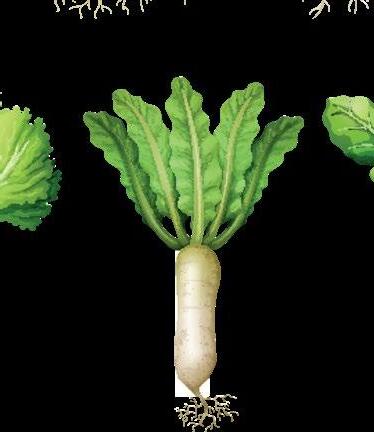
Some varieties to try:
• Jerusalem artichoke
• Heritage runner beans
• Beets
• Chard
• Brassicas like kale and Brussels sprouts
• Leeks
• Parsnips
• Onions
• Rutabaga and turnip
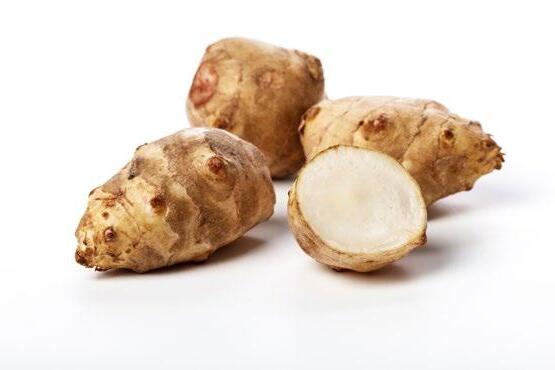


During the years on my knees in the garden, I have learned a few things, one being that all nutrients aren’t created equal, and some should not have been created. Over the last ten years, there has been an explosion of products promising to turn your paltry veggies into award-winning plant matter overnight. Each bottle promises to be of the utmost quality and derived from only the finest ingredients to validate a shocking sticker price. Let’s be real here for a moment; there are only a few ways to skin a cat and make a nutrient compound beneficial to plants, most of which you can find in the ocean or your butthole. I am not sure why the industry decided to make things so damn complicated. Let’s go over a few things together.
During the years on my knees in the garden, I have learned a few things, one being that all nutrients aren’t created equal, and some should not have been created
A well-amended soil can get any plant to the finish line, and depending on genetics and environment, you may have something that can shame your neighbour’s crop, even though they used everything under the sun to promote exponential growth. If they ask what you use, don’t answer; it may create animosity when they find out how much you didn’t spend. So, if you are sick and tired of mixing nutrients, you can always ensure your soil is amended with enough goodies at the outset. May I suggest a shrimp shell compost or anything with poop?

It’s essential to put this into two separate categories: professional and amateur. Are you growing for business or pleasure? Some people blur the lines and treat their home grow like they work at a commercial greenhouse. Some people just want the damn garden to be green. I don’t recommend any amateur grower using anything outside the scope of something found at a hardware store. A 20-20-20 product and MAYBE a simple CALMAG solution in conjunction with a late-season top dressing will do the trick every time. If you are feeling fancy, low doses of a bloom nutrient late in the season for shits and giggles or perhaps a microbial enhancer throughout your grow.
Why be so careful? Because you’re going to fuck it up eventually like I did. And depending on how badly you may have wasted four months of work and some costly genetics. Leave the science and plant steroids to the consummate professionals because, in the Nutrient Space Race to the Moon, they have created some compounds with warning labels that rival a pack of cigarettes.
The pros like to maximise every aspect of the grow. They apply compounds at specific times to get whatever exaggerated effect they seek with a high success rate. But what happens when you give a nutrient with elevated levels of boron to a moron like myself? You get a crop with such severe nutrient burn, it’s like someone came over with a fucking flamethrower. There is no reason under the sun why 0.5 millilitres of ANYTHING in 7 litres of water should have that effect, yet here we are. I know, read the label and underfeed your first few times, but all it took was 0.5 millilitres to mess up my day, so don’t let the same thing happen to you. While marketed to everyone, many of these products are not intended for domestic or clandestine use. Their applications are usually complicated and time-specific, so avoid a plant homicide and keep things simple. Use what you know and know what you use.
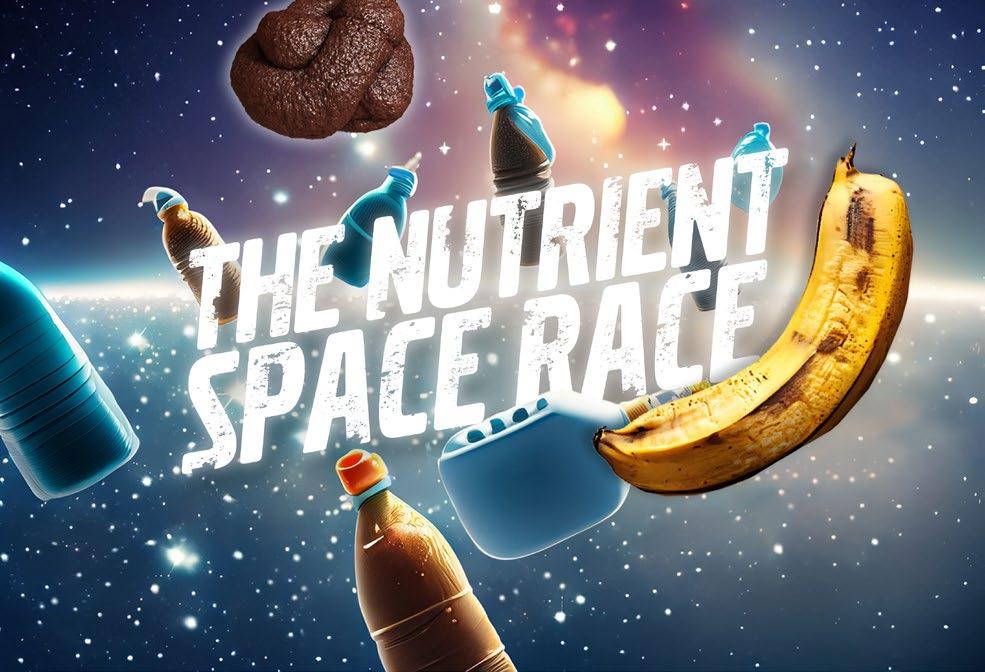
Can you achieve great results using things you find around the house or at the grocery store? You’re damn right you can, and some of this stuff makes up the ingredient list of “fancier” nutrients. Just finished making supper? Use your pasta or rice water with starches and small amounts of NPK. Frankly, you can boil almost anything and use it as fertiliser. You can boil down eggshells or weeds from your garden. It’s almost poetic, using the weeds to grow something useful. Banana peels soaked in water will provide potassium but expect a bit of a stink. Willow bark extract and your fish tank water will do your plants good. Speaking of fish, the best plant food I have come across is anything derived from the ocean. I have seen everything: stuff made from crab or shrimp, squid or seaweed. Grind up a mermaid and toss it in there because you can’t go wrong with marine compost. Much like the banana water, it stinks, but between my dogs’ farts and mine, I think a mild fishy smell is tolerable.
Can you achieve great results using things you find around the house or at the grocery store? You’re damn right you can
I am not a nutrient prude. I use some of the products in this publication. Some are a permanent fixture in my arsenal, but in recent years, there has been a glut of redundant or unnecessary products that might cloud the way of what is best for you. There is no need to name them; I’m sure they will be out of business when the bottle of boron-laced acid is empty. While we wait for the wave of gardening products to thin the proverbial herd, I say keep trying new things, keep using new products, and just be aware that spending 20$ and taking a shit in your garden sometimes equate to the same results. Regardless, I suspect the intensity of this nutrient space race will be over; there are only so many compounds available, and people realise there is no miracle bottle. It’s all just poop and microbes and stuff you find on the table of elements, anyway. Just keep your dosage low.
Happy growing my little bean sprouts, and to all the companies making quality nutrients, thank you. 3
BIO Regi Oneton is a multi-disciplinary artist and daytime executive. He’s been a member of Socan since his first album release at the age of 20, and is a self-taught audio engineer and self-proclaimed studio rat. Regi is a late-blooming street artist and painter whose works can be found hanging in the offices of Burton and Vans Canada. Long-time contributor to the Under Pressure Graffiti Festival and lover of the Arts. As the years plow forward, he has added botanical enthusiast/plant father to his litany of passions. His interests include writing and spending too much time looking at his phone.
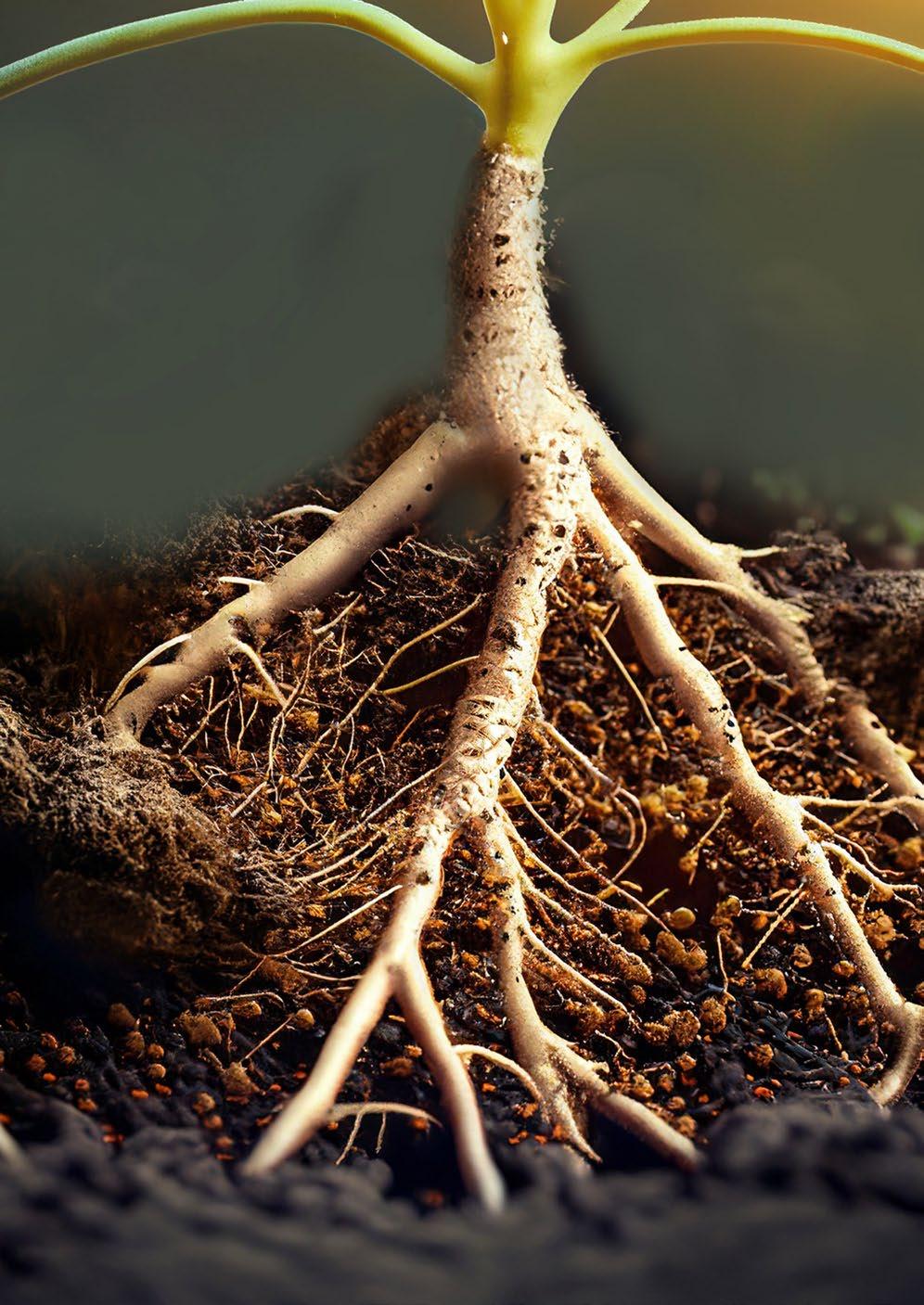
We hear many references to the “gut microbiome” lately. Thanks in large part to the work of fermentation enthusiasts, there has been a cultural turn toward cultivating healthy “microherds” of beneficial organisms within our bodies. Without necessarily realising it, we’ve fundamentally changed our perception of ourselves as animal creatures. Modern scientific methods and technologies confirm and reveal the interconnectedness, even inextricability, of each of us with other species in our physical space.
We are constantly exposed to an immeasurable diversity of microbial life. Studies weave knowledge about mental and emotional wellness, neurological function, stress tolerance, and nervous system regulation with examinations of bacteria and yeasts inside and on our bodies (1). We are becoming more aware of the human-as-holobiont.
Greater than the sum of its parts: what is a holobiont?
If the microbiome may be described as an “assemblage of communities” of microorganisms (2), a holobiont is the “supraorganism” formed by a centralised individual and this “hosted” population.
If the microbiome may be described as an “assemblage of communities” of microorganisms, a holobiont is the “supraorganism” formed by a centralised individual and this “hosted” population
The choice of “who gets in” isn’t always within control, as in the case of viruses against which no previously developed immunity exists. However, with intention, we can work toward providing a supportive microbiome, creating the conditions for swift, well-resourced, and decisive responses.
Coevolution through natural selection has guided the development of plant genetics that reach new heights of yield and environmental resilience when allowed to play with their full deck. This transformative perspective will enable us to conceptualise our cultivated plants as holobionts.
Why view plants as holobionts instead of individuals of a single species in a community with other organisms?
Only in the most strictly managed laboratory setting (reserved for propagation by tissue culture) is it desirable to pursue conditions approaching sterility.
Yet, we are rightly concerned about the advantageous growth of soil fungi that negatively impact young plant material, causing damp-off. We worry about transmitting viruses and other pathogens, especially those which have thrived and proliferated in our growing spaces.
Maintaining a clean growing environment, observing closely, and responding to issues with interventions or procedure changes is good practice. While this does work, it can lead to treating symptoms, not causes.
When we envision each plant as a holobiont, we acknowledge that while the general functions of the immune system and metabolism are encoded in the DNA of the plant, the effectiveness and health of those systems are highly reliant on microorganisms, some of which have coevolved and are highly specialised to the plant.
Incredibly, even in sanitised substrates and when controlled for exposure by air currents and through fertigation, the microbiomes of young plants can be rich with life. The seeds introduce diverse bacteria and fungi to the microbiome (3). These species are ‘vertically’ transmitted, from generation to generation, instead of being obtained ‘horizontally’ through the external environment. Vertically transmitted microbes are often among the most beneficial.
Seedlings and newly struck cuttings are busy establishing their root systems and leaves to acquire nutrition, gain energy and develop structures needed to be buoyant in life’s coming waves. It can be helpful to encourage the horizontal transmission of known beneficial microbes after reducing the number of possible encounters with powerful antagonists.
Cuttings come with microbiomes thriving in and on the aerial parts of the donor plant. Depending on the assessed health of those mothers, it is a judgment call as to whether there is more reason to dip and strip these surface microbes to eliminate the transfer risk of spores and other potential threats to a plant without its vibrant root microbiome.
Economies of space and resources and regulatory guidelines shape decisions about optimising and prioritising the needs of targeted holobionts within an ecosystem. Certain products are disallowed as sprays within a certain pre-harvest period for consumer protection, and environmental health is considered when it comes to the allowable application of nutrients, other agricultural amendments, and pest-management products.
Cuttings come with microbiomes thriving in and on the aerial parts of the donor plant.
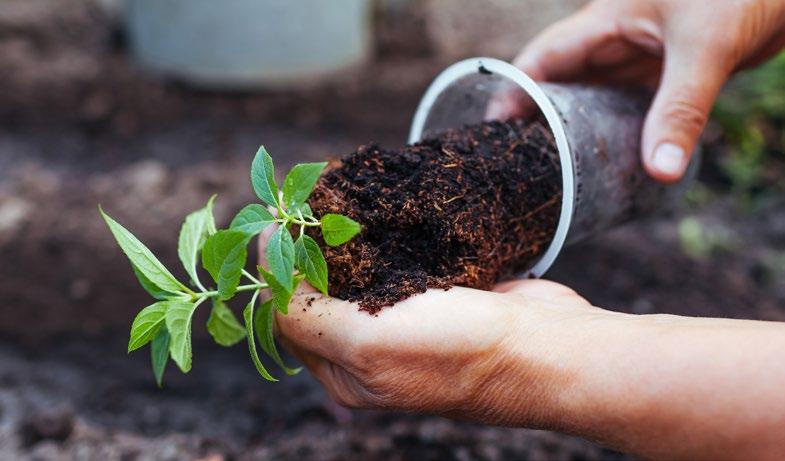
It is a good idea to consider plants’ changing needs as they grow: demands on their microbiomes will change in character and intensity
Thankfully, data-supported evidence is being accumulated to demonstrate the real value of attending to the health of plant microbiomes. Where possible, allowing a population of diverse holobionts to coexist (e.g. in succession gardening and intercropping) favours the meetings of mutually beneficial organisms. This, in turn, has demonstrable economic relevance.
Just as live food cultures are easily found in grocery stores, like apple cider vinegar “with the mother”, microbial inoculants have become commonplace in garden centres and grow stores. Any grower who can purchase pre-made soil mixes or fertilisers may now experiment with products certified to contain measurable amounts of beneficial bacteria and fungi.
Following the producers’ instructions is essential. There is no reason to believe that “more is better”; the plants will select those with which they work best, and these will increase under favourable conditions.
It is a good idea to consider plants’ changing needs as they grow: demands on their microbiomes will change in character and intensity. Just like “veg” and “bloom” nutrient mixes, it is not uncommon to see products designed with those same general life stages in mind. Others may contain a mix of species which will be ‘assembled’ and proliferate on or within the plant according to its needs as it develops.
In commercial settings, it is handy (or necessary) to reference the list of well-researched, specially selected and bred, beneficial bacteria and fungi in purchased products. Many have been certified for use in organic production.
How to work with plants as holobionts varies according to growing style.
As the main diversity of species in a unique plant’s root microbiome is horizontally assembled in the soil, it is crucial to consider the traits of your chosen growing medium.
Living soil growers and regenerative land stewards are familiar with various ways to acquire, support, and multiply diverse populations of beneficial microbes, making them available to plants via their root zones. Some of these include brewing Actively Aerated Compost Teas (AACTs), collecting and propagating Indigenous Microorganisms (IMOs), and using no-till,’ chop and drop’, and intercropping (companion planting). Soil specialists are building capacity in agricultural networks, and you can consult with one or take courses yourself to gain from this holistic school of thought.
In these growing systems, the plant holobionts are generally given as much opportunity as possible to select and assemble their constituent populations of bacteria and fungi. When a singular species dominates an agricultural space, as in the case of monocropping, especially where genetically identical plants are grown, the preferences of that particular holobiont type reduce microbial diversity in areas under its strong influence.
Controlled environment growers using soilless mediums must take a different approach to ensure the continued availability and population balance of certain microbial populations. Often, these growers may have several subtypes of a commercially important species under cultivation, and these also demonstrate variance within their microbiomes. Research suggests this is guided by the genetic favouring of certain partner microbes for producing target phytochemicals (4)
“Re-populate beneficials for different plant life stage requirements at regular intervals.”

Once acquired, aspects of a holobiont found within plant structures, as opposed to on the surfaces, may be less impacted by the ebb and flow of water in a hydroponic system. Ensuring the cleanliness of fertigation infrastructure (drip systems, especially recirculating ones) requires balancing the regular use of antimicrobial agents (like hydrochlorous acid and hydrogen peroxide) with their effects on the holobiont’s wellness.
Strike a balance between allowing beneficials to thrive and not completely excluding or eliminating exposure to challenges
Re-populate beneficials for different plant life stage requirements at regular intervals. At transplant, and upon altering lighting schedules or nutrient regimens, it’s a good strategy to ‘top up’ the diversity of available microbes so the plant can accumulate more of what will best serve them at that time.
In an intensively managed system where there are no insects to crawl up from the dirt, hop from leaf to leaf, or buzz about to sample nectar, a good argument can be made for misting or fogging with microbiome-supporting solutions, especially where seeds are being produced for future plantings. Instructions for appropriately cleaning plant parts designated for consumption before storage and use will be part of this protocol.
Strike a balance between allowing beneficials to thrive and not completely excluding or eliminating exposure to challenges. Various stressors enable plants to produce immune responses to maximise the production of commercially-valued secondary metabolites. Some other phytochemicals (plant-serving molecules but helpful to humans) contribute to post-harvest storage capacity and nutritional value. Since energy is always being used

to power these processes, consider supplementation a means to keep the plant from having to manufacture this energy itself and use it to maintain its microbiomes.
Crop monocultures becoming extremely vulnerable to a particular disease has been historically explained by their loss of ability to “fight off” a unique, unfamiliar attacker. Shifting perspective to these crop plants as holobionts, we can understand better how disease resistance can become a function not only of supporting the immunity of plants within their lifetimes but also considering the inheritance of beneficial microbes and their co-evolutionary relationship with the genetics of the socially valued species.
Advancements in DNA research technologies and revelations of how microbial interactions with individuals influence the expression of specific genes, are exposing even greater complexity. More than ever before, we can explore the downstream, heritable impacts of plant microbiome wellness on domesticated plant species. Revisioning crop plants as invaluable co-stewards of the land makes it possible for guided, intentional, and more harmonious co-existence with unseen populations. 3
References:
1. ncbi.nlm.nih.gov/pmc/articles/PMC5581153/pdf/oncotarget-08-53829.pdf
2. dx.doi.org/10.1016/j.mib.2017.07.001
3. doi: 10.3389/fmicb.2021.737616
4. doi: 10.3389/fmicb.2020.00491
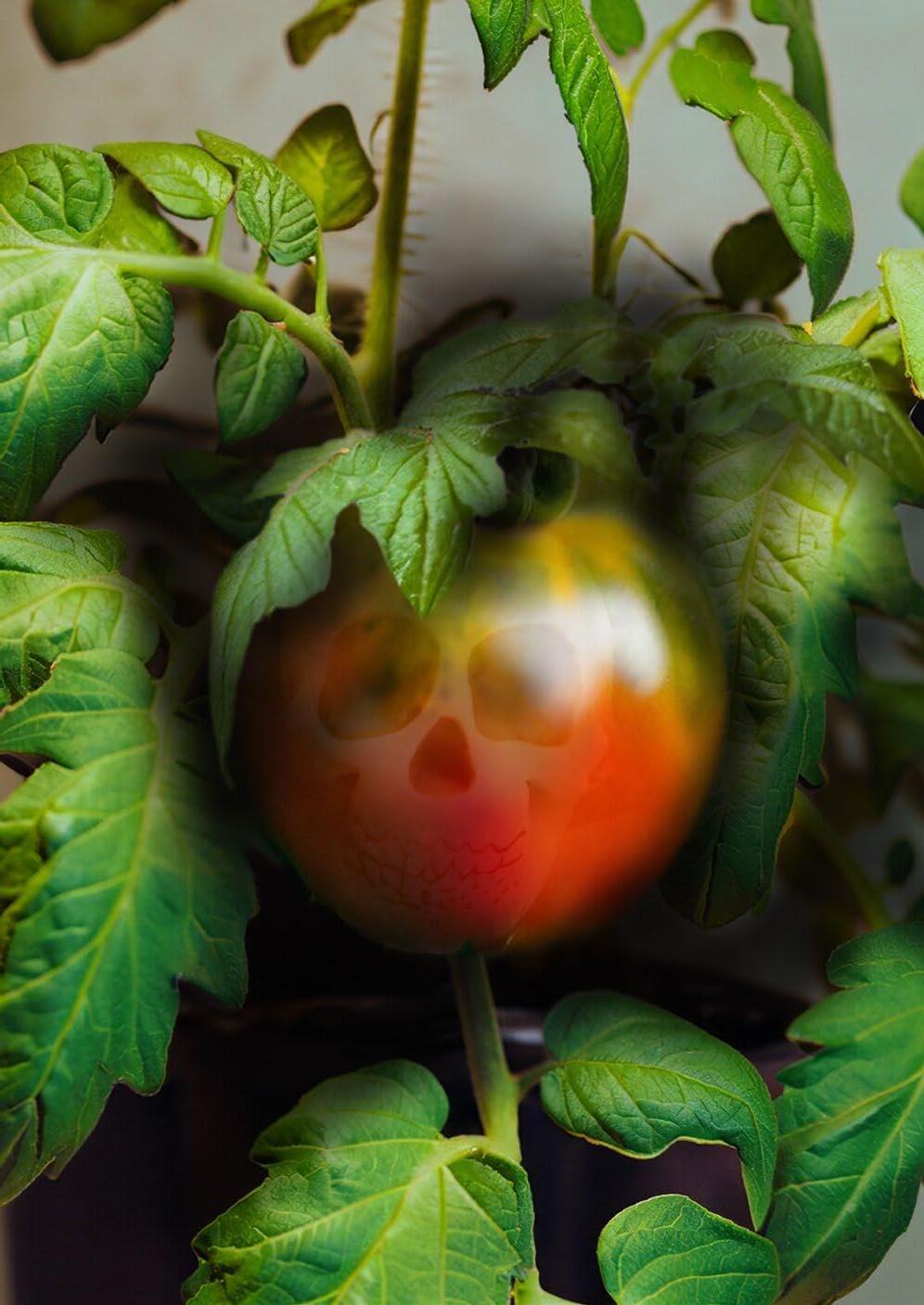
PFAS, or per- and poly-fluoroalkyl substances, have quietly woven themselves into the fabric of our everyday lives
You may have noticed the mysterious acronym floating around, whether scrolling through your newsfeed or listening to current events. PFAS, or per- and poly-fluoroalkyl substances, have quietly woven themselves into the fabric of our everyday lives. While lead contamination and ongoing microplastic concerns have held the spotlight over the years, PFAS have stealthily crept into the narrative, and their effects are becoming more apparent as ongoing research begins to bear fruit.
These unsettling consequences have unfolded since the 1930s when PFAS chemicals were invented and the rise of nonstick products started. Found in common items like food packaging, stain-proof rugs, waterproof clothing, nonstick cookware, and even firefighting foam, these substances have become pervasive and under-regulated in our environment, and they’re not going anywhere in our lifetime until researchers can reliably remove them.
Dubbed ‘forever chemicals’, PFAS are a large group of substances that earned this nickname due to their stubborn,
long-lasting nature in the environment and our bodies
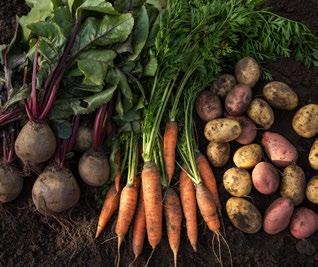
Dubbed ‘forever chemicals’, PFAS are a large group of substances that earned this nickname due to their stubborn, long-lasting nature in the environment and our bodies. Composed of strongly-bonded carbon and fluorine atoms that resist easy degradation, some forms of PFAS can take over 1,000 years to break down in nature and around seven to reduce by half in our bloodstream. They travel freely through various channels, including the atmosphere, surface water, soil, and groundwater.
A staggering 98% of Americans have detectable levels of PFAS in their blood. There’s been “some sort of statistical association between PFAS and every major organ system in the body”, according to Elsie Sunderland, associate professor of environmental science and engineering in the Department of Environmental Health at Harvard T.H. Chan School of Public Health. PFAS are linked to asthma, high cholesterol, immune suppression, thyroid diseases, liver and kidney damage, certain types of cancer, reduced fertility, and low birth weight. But this is just the beginning; ongoing research continues to uncover more.
Although they have been measured in air and dust particles, PFAS primarily enter our bodies when we eat and drink from contaminated sources. The substances can wind up in food in many ways, from leaching off paper and plastic food packaging to infiltrating the soil.
According to the Wisconsin Department of Health Services, studies have demonstrated that PFAS can be taken up by plants from contaminated soil and irrigation water; the amount that ends up in a particular plant depends on a few factors, including soil properties, produce type, water frequency, and PFAS levels in the water and soil itself.
So, as we grapple with the ubiquity of PFAS, a pressing question arises for every gardener: how can we shield our gardens and bodies from these forever chemicals? The good news is that there are many steps you can take, and simple yet effective measures can make a significant impact. Washing all produce in clean water and peeling or scrubbing root vegetables before eating can remove PFAS lingering on the surface. Adding high organic carbon sources like compost, peat, and manure that do not contain PFAS to garden soil has also been reported to reduce plant uptake.
However, these precautions don’t consider one of the primary sources of PFAS: water. Watering your garden with PFAS-laden water perpetuates the problem and exacerbates it as you inadvertently reintroduce these persistent chemicals into the ecosystem you seek to protect. Switching to filtered water, or water from another safe source, is the most effective option to mitigate PFAS exposure in your garden. While activated carbon filters, on average, remove just 73% of PFAS, researchers at Duke University and North Carolina State University found that reverse osmosis filters and twostage filters using a treatment train reduced PFAS by 94% or more. Depending on budget and availability, any filtration method offers a significant improvement over having no system in place.

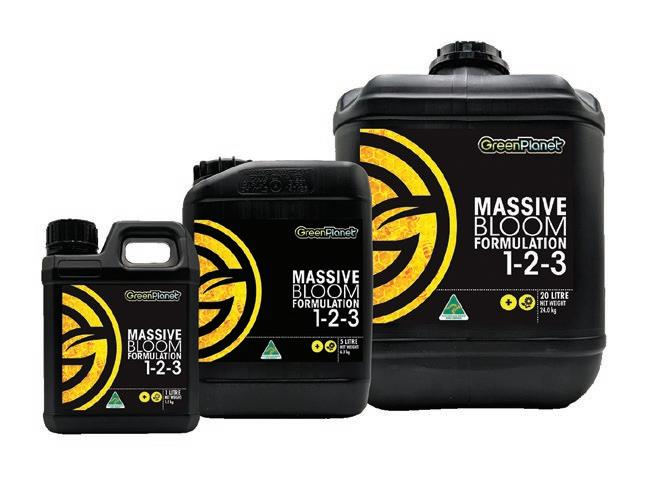

As research broadens and community awareness grows, the hope is that regulatory frameworks will strengthen and PFAS will be systematically controlled and eradicated
If you’re highly concerned about PFAS contamination in your area, you may want to consider adopting an alternative gardening practice altogether. Hydroponic gardening with filtered water eliminates the risk of PFAS in your soil, allowing for precise control over every aspect of your garden. A controlled indoor gardening environment, such as greenhouse growing, may also offer better protection against pollutants.
With the effects of PFAS only recently yielding results, the current regulatory landscape is consequentially patchwork, with varying levels of oversight across different regions. While some areas have established limits and guidelines for PFAS concentrations in water and soil, others are still formulating comprehensive regulations. In 2023, the EPA proposed the first federal drinking water rule for PFAS. The EPA “will require public water systems to monitor for six PFAS chemicals, notify the public if the levels of these PFAS exceed the proposed regulatory standards, and take action to reduce the level of PFAS in the water supply.”
Other highlights include:
• Measuring and monitoring of PFAS in population blood, food, and marine life
• Accelerating PFAS cleanup from the environment
• Strengthening policy and reducing the procurement of PFAS
• Expanding programmes and resources
• Closing critical research gaps in PFAS detection, disposal, health effects, and
• PFAS-alternatives
• Bolstering community engagement and information sharing.
These updated guidelines are being implemented specifically within the United States. Globally, the regulation of PFAS varies. Health Canada has established guidelines for PFAS in drinking water, and the European Union has imposed restrictions and outright bans on certain PFAS. In Australia, the government has launched a voluntary phase-out programme for some PFAS and has restricted their use in firefighting foam. The promise of a PFAS-free tomorrow hinges upon progress in measuring, monitoring, and cleanup. As research broadens and community awareness grows, the hope is that regulatory frameworks will strengthen and PFAS will be systematically controlled and eradicated.
Addressing the presence of PFAS in our gardens and remaining aware of their impact is not just a matter of environmental responsibility but a crucial step towards safeguarding our health and the well-being of future generations. While we await the integration of broader safety measures, the reinforcement of established laws, and the widespread removal of contaminants from the environment, we can play a pivotal role by taking proactive steps to mitigate PFAS exposure. 3




For city dwellers, the gentle gift of harvest is most often seen in farmers’ markets at best. Or, more likely, bound within an inch of its life in plastic at the local superstore. Raising crops in the city is difficult due to a lack of space and light. Ever-increasing awareness of food miles, the knowledge that grocery stores only stock three days of food, and the desire to eat local have brought more urbanites to grips with growing food on balconies and whatever can be grown in little shady city gardens. Interest sharpens slightly, living just north of the 45th parallel where the winter is long and the growing season is not.


Ever-increasing awareness of food miles, the knowledge that grocery stores only stock three days of food, and the desire to eat local have brought more urbanites to grips with growing food on balconies and whatever can be grown in little shady city gardens
My urban growing adventure began in Montreal, Quebec, around 2011. As so many modern tales start, I’d received a three-minute video from a friend, filmed in a market town in Todmorden, Yorkshire, UK. This town’s people had taken its unused green spaces and had begun growing vegetables for all to share. All of the plants were donated, planted, and cared for by volunteers and were to be shared by the community. No one had to make an application to collect from any of these gardens. It was entirely free for the community to harvest at will.
And no one had abused it.
Perhaps it was seeing Mary Clear in the video saying, “Old people like a bit of mint with their new potatoes” as she stood in one of the car parks home to several herb plantings. Or maybe it was Pam Warhurst with her trademark tongue-in-cheek narration, sliding in comments like “food in your face propaganda gardening”. Or the older handyman perched on the edge of a street planter, saying he just “needed to do something meaningful”.
The townspeople had come together around the need to feed themselves, but more than that, they needed to be involved with each other and share. The local high school got a greenhouse. Then, the Prince of Wales visited with a royal seal of approval. Support begat support. They lined the canal that passed through the town with planters and built a meadow near the new doctor’s surgery named Pollination Street. The whole town
had become a wonderland of food planting. All the work was volunteer, and all the food was for sharing between them and harvesting at will. By the time I’d heard their message, there was an international network of Incredible Edible towns throughout much of the English-speaking world, France and beyond.
They conspired in the message of their endeavour to remind me of the importance of food, community and sharing. Everything didn’t have to be bought and paid for—a modern gift culture. The idea of growing and sharing food as a community cuts through the current practice most of us endure of grocery shopping in the superstore garden to lay bare the communal aspects of our nourishment.
It appealed greatly to my itchy green fingers. To my great surprise, in 2012, the Westmount Horticultural Society, which I had recently joined, agreed to take the idea to the City of Westmount. I showed them the video and waxed on about the benefit that local food growing has on a community. Again, to my surprise, the city agreed immediately to support the idea. However, instead of the volunteer troupe of gardeners and residents I had envisioned, the city would manage the entire project, the planting, maintenance and watering. I helped select the plants which they bought. The city planners worried that the residents wouldn’t like it if it began to look “too weedy”. They suggested planting up and down three blocks of the big main street and a large planting at the end of Prince Albert Avenue, where I lived.
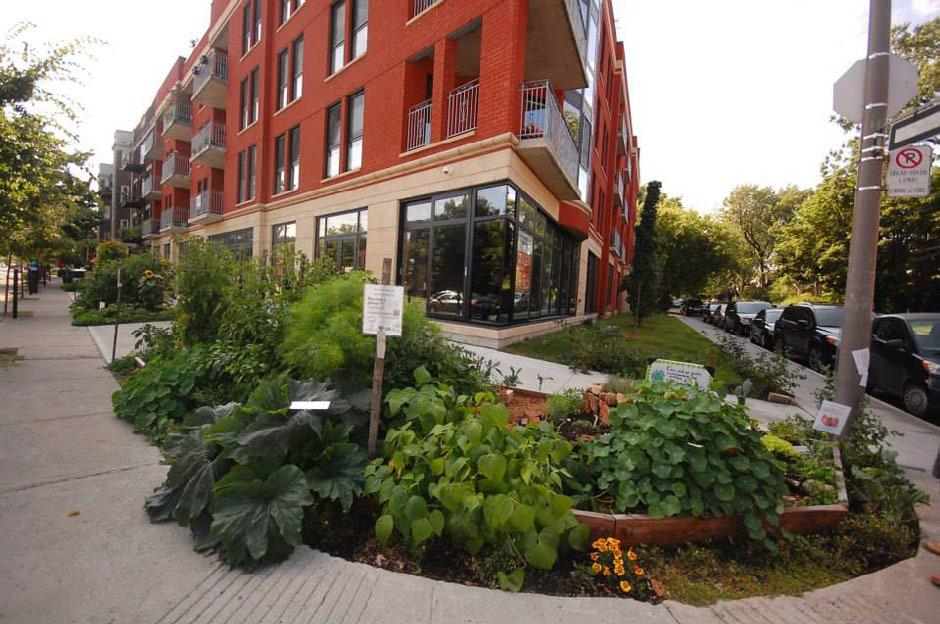
The townspeople had come together around the need to feed themselves, but more than that, they needed to be involved with each other and share


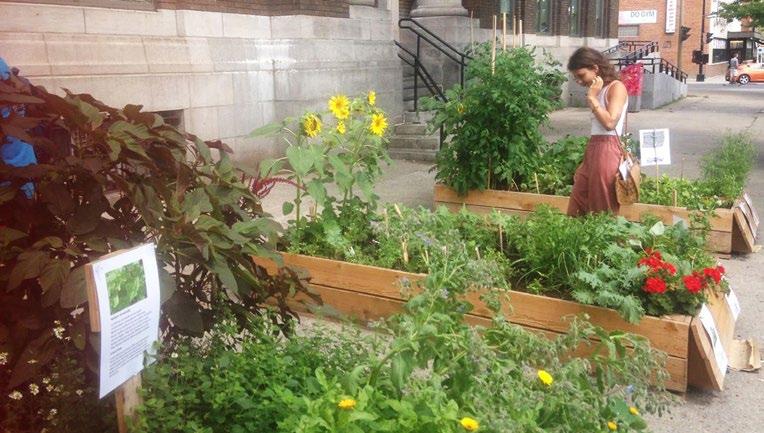
Me? I was already walking the talk. I had transformed our little city garden into a demonstration micro food forest with six fruit trees, loads of berries and some crops on the roof sandwiched between two two-story townhouses. It also held five laying hens with a beehive on an upstairs deck.
The city enlisted a young woman named Jayme Gerbrant, newly from Winnipeg. In the first year, we planted herbs, cherry tomatoes, chard, two kinds of kale, and nasturtiums. It wasn’t crops, but it was edible, and anyone could harvest it. We posted suggested cropping techniques for the herbs and the greens. At the end of the season, some friends and I harvested what remained and brought it to the local food bank in the next borough over.
The following year, I recruited the local high school to help with the final harvest, again bringing it to the food bank. Soon after the second harvest, it became clear that my husband’s parents required help in the UK. Off we went, leaving the project in the very able hands of the city.
Jayme has been able to keep the project going since then. She added a fruit tree programme for residents, including apples, pears, and sweet chestnut trees. The herb and vegetable plantings have since moved to the main parks and city hall. They’ve planted a pear orchard in the park and built a potager on the underground hockey arena. They have established a “seed lending” programme at the library where residents return seeds from the next generation of plants. The end-of-the-season harvests are well supported by the community.
It doesn’t take much, really. It is surprising how ready we all are for food that is not business as usual. It just takes a few willing hands to plant seeds and a desire to share the harvest.
While I was packing my bags for the UK, the next borough over, the one with the food bank, was tooling up their version of Incredible Edibles (IE) under the umbrella of Transition NDG. The borough of Notre-Dame-de-Grace’s (NDG) version of IE was entirely volunteer, built on community participation, and truer to the original design. Churchyards were transformed into potagers, and local businesses adopted storefront planters. Front lawns turned into edible gardens. The local grocery store sponsored a planting of herbs and veg at the fire station. A large planting space was donated by a resident for shared planting of freely available produce. A couple of primary schools have begun starting seedlings for IE, tending them and watching the magic happen from tiny seed to bushy little plant. A play was written. Over ten years, NDG has built eight IE gardens, and countless citizens have converted their small front and back gardens to grow produce. All activities are organised and presented in both English and French!
Recently, NDG invited me to talk at the 10th anniversary picnic. It was a small turnout on a chilly evening, just the hardcore. And we reminisced. After the gathering, I thought it would be nice to see if it’s possible to kick some Incredible Edibles into gear in the Quebec Laurentians where I now live. It doesn’t take much, really. It is surprising how ready we all are for food that is not business as usual. It just takes a few willing hands to plant seeds and a desire to share the harvest. 3
Marci’s recommendations for further reading:
• IE Todmorden: incredible-edible-todmorden.co.uk
• TED.com: rebrand.ly/e47f73
• IE Westmount: westmount.org/en/environment/incredible-edibles
• IE NDG: IE.NDG
BIO Marci Babineau grew up in gardens in California and Georgia. She currently gardens north of Montreal, Quebec, where she has nestled a food forest into a south facing hillside. Working in organic gardening and landscaping for 40 years, she has written about and taught a variety of gardening topics to young and old in Montreal and Cambridge, UK.
So many problems, so many solutions! In this edition, our expert growers have been sharing tales of garden downfalls and the best remedies to help get you back on top of your growing game. We’re letting the good times roll with our 5 Cool Ways to Identify, Prevent, and Solve Problems in Your Garden. The best part? Many of these suggestions are easy to implement, no matter your level of growing experience.
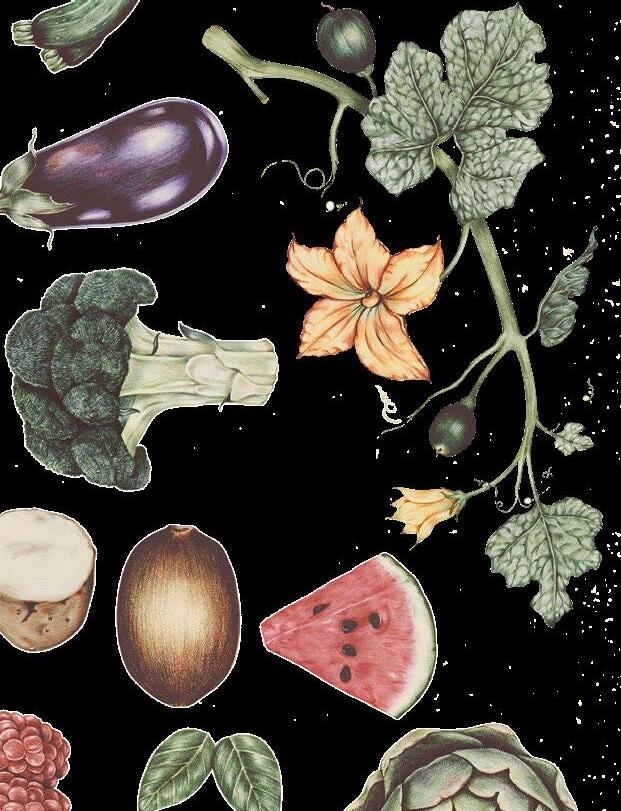
Growing a garden is about more than just planting a seed and offering it water and sunlight. Every serious grower needs to measure the pH levels in their growing medium to ensure plants can access the nutrients they need to grow. The Bluelab Soil pH Pen can help determine if your medium is too alkaline or acidic. It’s versatile and works in soil, coco coir, potting mixes and solutions. The pen takes your growing media’s temperature so plants can grow and develop correctly.The Bluelab Pulse Meter is also recommended to check that you aren’t over- or under-feeding your plants, Measure the EC or PPM to see if the garden is getting enough.This gadget will lead to healthier plants and less waste of expensive nutrient solutions; it also measures moisture levels and the temperature of the root zone. If nothing else, purchase a moisture meter. Overwatering is a common gardening mistake that leads to diseases and crop loss, and even on the hottest days, your plants may not be as thirsty as you think. Arm yourself with a few gadgets to help your growing ventures along!
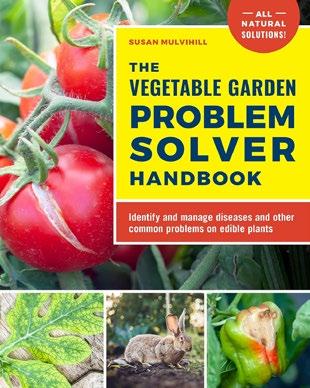

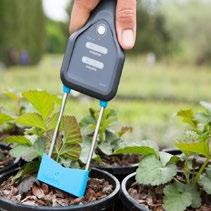

It’s not always easy to identify what’s hurting your plants with the naked eye. In The Vegetable Garden Problem Solver Handbook, author Susan Mulvihill recommends investing in a few handy tools to help you diagnose various garden issues. A magnifying glass or something as simple as a cell phone camera can help you investigate a potential problem and examine plant tissue that doesn’t look right. For example, zooming in on mould spores or spots will help narrow down what you’re dealing with. Mulvihill also suggests a microscope for getting up close and personal with the pests or diseases plaguing your garden.Various apps help identify plant diseases; some are free, others aren’t. Finally, gardening books (like Mulvihill’s fantastic read) and websites (like GCMag.co!) will help you understand what’s attacking your plants and how to deal with the issue for good.

Do you know what kind of dirt you have? Every garden’s unique soil texture is determined by a balance of the three main mineral components - sand, clay, and silt.Together, these affect how the soil absorbs water, nutrients, and air. If the balance isn’t right, your plants won’t thrive as well as they should. Take a sample of the garden soil and send it to a lab to be tested, or perform an easy DIY test at home. Fill a mason jar with two cups of earth and fill the rest with water. Shake well and let it settle for a day. Sand will fall to the bottom, silt forms the middle layer, and clay settles on the top. Organic matter floats on the water’s surface. A fertile soil is relatively balanced (i.e., 30% sand, 40% silt, 30% clay) and is called a loam soil. If your soil needs improvement, you can immediately fix it by adding compost to boost drainage capabilities, water retention, and soil fertility.


Sometimes, we get so caught up in controlling pest problems that we forget to encourage beneficial bugs to take refuge in our gardens. Gardening organically and intercropping with a wide range of native plants will encourage pollinators to pop by for a snack. Offer a clean water source and shelter (like an insect hotel) so that beyond bees and butterflies, predators and parasitizers are attracted to your gardening space as well. These include ladybugs, praying mantids, green lacewing larvae, parasitic wasps, robber flies, hoverflies, soldier beetles, spiders, and more. These garden allies will protect plants from various pest problems, such as aphids, caterpillars, thrips, and beetles. Attracting beneficial insects to the outdoor garden is easy enough, but indoors, you’ll need to pay special attention to what you need to help you with your problem. Kits containing predator bugs can be purchased online, ready for you to release into the grow room for fast-acting and organic pest control.

A garden journal is one of the most understated ways to help you keep track of your successes and failures. Any notebook (digital or paper) will do, but we love The Garden Journal, an heirloom-quality record keeper compiled by garden personality and QVC host Linda Vater. Keep track of daily occurrences in the garden throughout all seasons and note any issues, such as pest problems or diseases. Jot down what you noticed, how you solved it, and what you can do differently in the future. For example, after discovering a cabbage worm infestation on your kale, you might want to write a note as a reminder to cover future Brassica family crops with transparent cloth when planting to protect them from egglaying white butterflies. Problem solved! Even though you don’t think you’ll forget, by the time the next growing season rolls around, you probably will. This journal covers five years of gardening so you can refer back and learn from your mistakes or build on your triumphs. Go you! 3








